Blog » How to Guides » Starting A Coaching Business While Working Full Time: The Definitive Guide
STARTING A COACHING BUSINESS WHILE WORKING FULL TIME
The Definitive Guide
This is the ultimate guide to starting a coaching business side hustle (while working full-time) with everything you need to do it successfully.
So if you want to:
- Supplement your current income and find out if coaching is the way to do it
- Identify and get coaching clients who are willing to pay you high-ticket
- Get a steady stream of coaching clients

- Get effective strategies which are tried and tested which won’t waste your time
- Avoid burning yourself out in the process or spending a bunch of money on stuff that doesn’t work
Then you’ll love this new guide.
Let’s get started.
Don’t have time to read the whole guide right now?

No worries. Let me send you a copy so you can read it when it’s convenient for you. Just let me know where to send it (takes 5 seconds)
Contents
CHAPTER 1:
The Fundamental Questions
Based on our survey, we’ve gathered that many coaches who are thinking of starting a coaching business while working full time, have some questions about whether it is the right decision to make.
These are not questions about the process, strategies or tactics.
These core questions are not about the “HOWs”. They are about the “WHYs”.
Here are the 4 fundamental questions about starting your coaching side hustle.

Why Coaching?
If you are drawn to coaching, you probably have a passion for people – a deep-seated desire to see them achieve great results and a drive to help them do so. You get a great sense of satisfaction by positively impacting those you interact with.
Coaching lets you do exactly this while being able to live abundantly and get recognised for it.
As per ICF’s Global Coaching Study 2020 the average income from coaching is $47,100.
And this is just the average.
Successful coaches can easily make 6 figures and the most successful ones make millions per year.
It is the perfect side hustle to start while you are at your full-time job as it gives you immense freedom, flexibility, and fulfilment while starting and growing it.
Seeing yourself help others and change their lives can give you the much-needed inspiration that few other jobs can offer.
Why Side Hustle?
Broadly speaking, a side hustle is an activity you do outside of your day or full-time job to move in the direction where you are doing something you love and are passionate about, and earn extra money from it.
Many of us feel stuck in our day job. We yearn to do something greater. Something more fulfilling where we are helping others and making the world a better place.
Studies show that 85% of people are unhappy at their current jobs and 77% want to have a positive impact in the world.
But very often, doing this isn’t sustainable – at least when you are just starting out.
And at the same time, life doesn’t stop. You have to sustain yourself, have bills to pay, and a certain lifestyle to maintain.
A day job takes care of these basics. It provides you stability while you grow your passion into something that is sustainable – looking at the data below, realistically is achievable but can take time.
There are costs associated with starting and growing any business, and the same holds true for a coaching business. What you earn from your day job can effectively fund your coaching business.
Having money makes everything happen faster and (often) easier.
Why is it the right time?
Coaching is no longer considered a luxury or that which is accessible only for the rich and famous. Today, coaching has become mainstream and it is almost as common as personal training.
People from all walks of life recognize that they are facing complex and difficult challenges which they are unprepared to solve on their own.
According to ICF’s Study, the prevalence of coaching is up by 38% in the last 8 years from 117 countries to 161 countries.
That means even developing and non-developed countries have opened up for coaching.
A prime example of this is my client Anila Bashllari who started her coaching business in Albania, where coaching was unheard of. She is now ranked as one of the top 5 coaches in Eastern Europe, and the Number 1 Executive Coach in Albania.
Even millennials who have recently started earning are strongly inclined towards coaching. As per a 2015 study, 94% of millennials reported making personal improvement commitments (compared with 84% of Boomers and 81% of Gen Xers).
This means the demand for coaches is just going to grow from here.
What this means for you is that the best time to start is NOW.
It takes time to build a sustainable business and a coaching business is no exception.
The sooner to move yourself into action, the earlier you are likely to get your coaching to a point where you can coach sustainably full-time and lead a life which is inspirational for you and the people around you.
Is it possible for you?
One of the great things about a coaching business is that it is very achievable. The main things you need are courage, motivation, and the right guidance.
Robin Sharma was working as a litigation lawyer while he wrote and released his books. He only quit after his book “The Monk Who Sold His Ferrari” shot him to fame.
Marie Forleo started coaching while she was working full-time at a fashion magazine.
Deepak Chopra, Wayne Dyer, and a lot of the big names in coaching, started while they were working full-time.
And it’s not just the big and famous coaches. I have seen so many coaches firsthand (who I’ll talk about in the Case Studies chapter) who started off working day jobs while coaching on the side, then successfully transitioning their coaching business from a side hustle to a thriving full-time business.
If they can do it, so can you!
CHAPTER 2:
Niching Effectively
Simply, reaching out to your prospects won’t convert them into high-end paying clients. A great looking website is useless unless it actually converts clients.
A strong building needs a strong foundation. And just like that, if you want to build your coaching business to great heights, you need to lay a strong foundation for it.
An effective niche is that strong foundation

What a Niche is Not
It’s estimated that over 90% of coaches who are just starting off fail because they do not have a niche.
Many coaches have just a vague or abstract idea of what a niche actually is. They choose a demographic and call it their niche.
A few examples of demographics are women working in corporate jobs, couples going through a divorce, fresh university graduates etc.
Remember, a demographic is not a niche. Making this mistake will result in your branding, communication, and marketing to not work.
That’s a recipe for a lot of frustration which often results in demotivation and eventually giving up.
So what exactly is a niche? Let’s dive in.
Formulating Your Niche
A powerful niche is a clean simple statement which includes two things:
- WHO do you want to target?
- WHAT do you want to do for them?
Let’s take an example.
Suppose that you are a dating coach. You decide to target men belonging to the age range of 20-25. That is your demographic.
Now you need to find out “WHAT do these men WANT?”
You decide to tailor your coaching services to those who want to get a girlfriend.
That means, your:
WHO = Men between the age of 20-25
WHAT = Men who want to get a girlfriend
Now combine the WHO and the WHAT components and that’s your coaching niche.
Your Coaching Niche = Who + What i.e. Coaching for men between the ages of 20-25 who want to get a girlfriend.
Pretty simple, right?!
Now follow the same steps to define your niche.
Defining your niche is not the only thing you need to do. You need to validate it.
Validating Your Niche
To validate your niche you need to ask yourself these 4 questions
1. Are you passionate about serving them?
While growing your coaching business you will, just like any other business owner, go through hard times. Your passion for serving your niche will fuel you to not give up and get through those hard times.
Another important aspect of this question is that, if you are passionate about your niche then you have deep empathy for them. If you have deep empathy for them then you will know crucial things about them.
You need to know their needs, hopes, fears, desires, and the obstacles they are facing.
Knowing these will enable you to relate with them, and consequently position your marketing strategy to appeal to them. Knowing this will also allow you to effectively serve them.
Being passionate also results in you having deep knowledge about the pains and desires of your niche, which will reflect in how effective you are in serving their needs.
2. Is your niche abundant and easy to reach?
Remember, as a coach you cannot get 100% of your niche. Typically most coaches get less than 10% of their audience overall. So if you have a niche which consists of just a hundred people, then it’s very unlikely that you can build a sustainable business with that small a niche.
Now even if they are abundant in number, you need to be able to effectively and easily reach them. Your niche should gather somewhere where you can reach them. That could be Facebook, LinkedIn, email lists or any type of online community.
You’re going to have a hard time reaching your target audience if you are targeting 90 year old Amazonian tribeswomen that haven’t been out of the Amazon in the last 20 years, to coach them about new medical methods to heal the sick, right?
If they can’t see you then you won’t be able to get them as clients.
3. Will they be able to pay you?
The people in your niche should have the financial capability to pay you.
As an extreme example, let’s say your niche is to help people who have recently filed for bankruptcy get back on their feet to be able to start building financial stability.
In this case, you will be hard pressed to find clients who will actually be able to pay you well for what you are offering though what you are offering is quite valuable.
4. Are they willing to pay you for the problem you solve?
Ask yourself the question, “Is this a problem someone will pay me $1000 to solve?”.
It is essential that the answer to this is a yes. If the answer is a no, then you need to rework your niche.
For example: Helping business owners find their inner child.
Most business owners don’t really care about it and those that do, are few in number.
This is not a problem someone will pay you $1000 to solve.
But on the contrary, look at the niche our client Brian Peters has: He helps financial advisors double their leadflow without spending any money on advertising via referrals.
Now that’s something a financial advisor would be more than happy to pay over $1000 for.
The problem you are solving should be painful enough for your niche that they feel compelled to open their wallets and pay you for helping them overcome it.
Now if you have answered yes to all the above questions, you are almost ready.
Crystallizing Your Niche
Now take a moment and analyze the niche you have come up with for yourself.
Does it answer the 4 critical niche questions:
Are you passionate about it?
Is it abundant and easy to reach?
Are they able to pay you?
Are they willing to pay you for the problem you solve?
And if your answer is yes to all of the above, then congratulations, you have nailed your niche!
If not, go through this chapter again until you do.
Don’t skimp on the time or effort you put in this step to get it right. This is one of the most critical steps and will be the foundation of your entire coaching business.
CHAPTER 3:
Pricing your Coaching
Now with clarity on your niche, you need to put a price for your coaching.
Pricing yourself right can mean the difference between constantly struggling to get and retain clients versus getting clients who are excited to work with you, pay you well for it and stay on with you for the long term.
So let’s get into how to do that.

Charging by the hour
One of the worst strategies to enter the world of coaching is charging by the hour.
Look at the most successful coaches out there. Do you see anyone charging by the hour? Why do you think that is so?
When people think about price, they compare like with like.
When you charge by the hour, your clients compare it to what they can get for the cost of that coaching session.
For example, if you are charging $100 for a session, your prospective client is immediately going to associate it with what they can buy for $100. A nice meal for their family. 5 months of Netflix. You get the drift.
They are comparing your coaching, which is often intangible to something tangible. And they are going to ask, is it worth it?
That comparison is going to make it very unlikely for them to opt in for your coaching. And even if they do, they are unlikely to stick with it for enough time as they are going to make that comparison for every single coaching session with you.
As a coach, you know that if you don’t get enough time with your clients, you are not going to be able to deliver real value.
If you don’t deliver value you won’t be able to retain your clients, get testimonials or get referrals.
And the situation gets worse when you raise your prices. The comparisons become even more ridiculous and hard to compete with.
It becomes harder and harder for them to justify paying you what you are charging them.
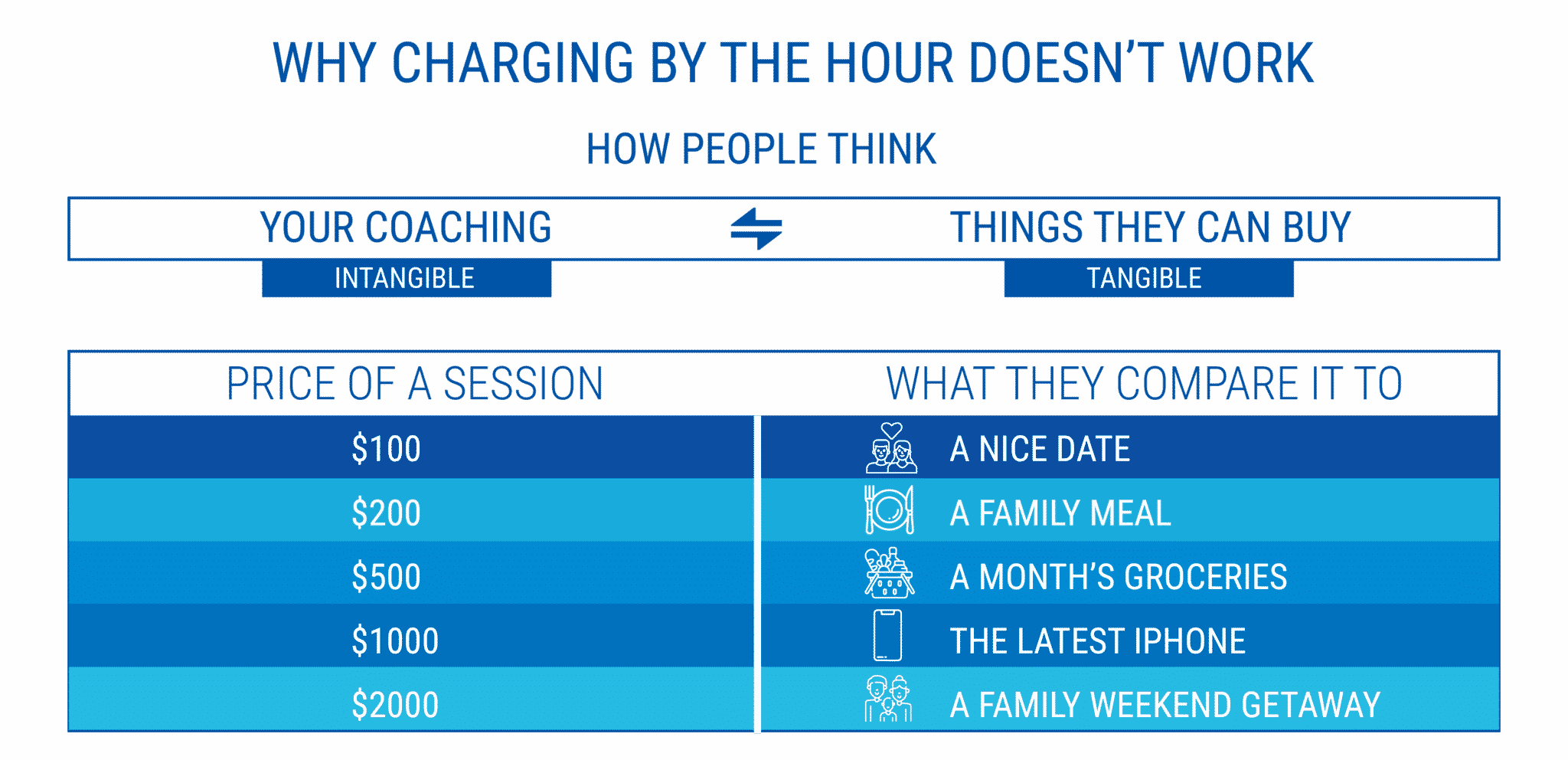
Why Package Your Coaching?
We analysed the pricing strategies of the top coaches of the world – Les Brown, Marie Forleo, Robert Kiyosaki, etc.
We tried to find who was charging by the hour.
And what did we find?
Almost none of the top life coaches of the world charge by the hour.
As I’ve shown you previously, people don’t really understand how to value coaching in terms of hours.
But they do understand how to value outcomes.
Outcomes are what a coaching package focuses on.
This will enable you to command much higher prices for your coaching.
So how can you effectively package your coaching?
What packaging is not
But before we get into how to packaging your coaching, you need to understand what packaging is not.
“Get 5 sessions for $X”. – This is not packaging. That is bulk discounting.
“Buy 6 sessions and get 2 free” – This is again discounting and not packaging.
“Buy my 6-week coaching program” – That’s a timestamp on your coaching program, not a package.
A coaching package or program is quantified by a dedicated OUTCOME.
For example, if you are a dating coach and you coach men between the ages of 20 and 30 to get a girlfriend, that’s your niche.
A coaching package for you could be a weekend bootcamp where your clients learn to attract, approach, connect with, and date any woman, anytime, anywhere.
Remember, your clients pay you not for your process, not for your sessions, but for the dedicated outcome they expect to achieve.
You will be able to command exponentially higher prices when you link the PAIN of your clients to the outcomes of your program.
Types of Packages
Now that you know what packaging your coaching means, do you think one package suits everyone in your niche?
Well, not everyone will be able to pay you for your premium coaching package.
This is why you need to have different packages to target different sections of your audience.
Statistically, most successful coaching businesses have 3 types of coaching packages.
Package 1: The Taster Package
You can imagine the taster package as giving A + B to your clients. It’s lower-priced but it still gives them a taste of what you have to offer.
Package 2: Mid-Range Package
The mid-range package gives your clients A+B+C+D. It’s double the value of your taster package and is often priced about double too.
Package 3: Premium Package
The real secret comes with the premium package. The premium package is A+B+C+…….Z.
If you compare the taster or mid-range to the premium, it gives exponentially more value and better outcomes for your clients.
Now while packaging, what you need to understand is that your focus should be on the premium package.
So why even create the taster and the mid-range packages?
The taster and mid-range packages just provide the illusion of choice.
A few people may choose the taster and the mid-range packages but most will choose the premium package because it adds more value.
It serves their needs and purpose for more than they expected, which in turn makes them willing to pay you more. It’s more value for them in exchange for the value they shelled out.
This is a well-documented pricing strategy called Good-Better-Best (G-B-B) pricing and works very well for coaches.
CHAPTER 4:
How to Get Traffic
Now that you have your niche and your program packages nailed, it’s time to get traffic.
Getting a steady stream of leads which can convert into paying clients is one of the biggest things a majority of coaches struggle with.
So how can you do it?

What is Traffic?
Traffic is essentially the relevant people in your niche seeing your content. These are the people you need to get in front of and convert into paying clients.
Types of Traffic
The book “Traction: A Startup Guide to Getting Customers” outlines the 19 main channels which drive traffic.
I’ve gone one step further and merged some of them to be more concise and relevant for coaches to come to the 12 types of traffic as listed below:
- PR: This is basically getting your name out in the press or getting media coverage.
- Blogging, SEO and Content Marketing: This is creating original content and publishing it on your own blog, on other blogs as guest posts, your YouTube channel, LinkedIn etc.
- Online ADs: This is posting ADs online. That could be on search engines like Google and Bing, on platforms like Facebook, YouTube and LinkedIn or display ads on other websites.
- Joint Ventures and Email Marketing: This is partnering with someone who has a mailing list or a traffic asset which is relevant to your niche.
- Educational Platforms: This is traffic from platforms like Udemy and Coursera.
- Speaking Gigs: This is getting on a stage and speaking to a relevant audience.
- Community Building: This is building groups on Facebook, Linked In etc. and getting traffic from there.
- Referrals and Your Network: This is people who you already know or people your existing clients know.
- Offline ADs: This is traditional media such as billboard and hoardings, print media like newspapers, magazines and flyers, television advertisements and radio ads.
- Trade Shows and Offline Events: These are events which have members of a particular industry display, demonstrate, and discuss their products and services.
- Viral Marketing and Unconventional PR: This includes conducting unique and unusual publicity stunts and creating content which goes “viral”.
- Engineering as Marketing: This means creating tools and resources which people find useful and will use.
Traffic That Doesn’t Work
PR
PR is great for credibility but the traffic generated from it is generally not relevant and will rarely turn into paying clients for you (unless you get on Oprah!)
Offline ADs
These can be pretty expensive and are more relevant to mass and non-niche businesses. So they typically don’t work very well for coaches.
Trade Shows
These are relevant for businesses which provide products or services related to the theme of the trade show. This traffic source is typically not relevant for coaches.
Traffic That Can Work But Not Recommended
Online ADs
Also called PPC (Pay Per Click), these can work really well and are a great way to scale up your marketing efforts.
But how effective your ADs are going to be is quite dependent on your niche. If your niche is quite competitive, your costs are going to be very high as you are going to be competing with so many people and your audience is going to be numb with the amount of noise coming at them from everywhere.
Though online ADs seem easy to execute, remember that they can be a black hole of money if not monitored properly.
Online ADs also have a limited life for which they work, after which you need to recreate your ADs.
It takes even experienced marketers 3 months on average to start seeing returns on their online ADs.

So unless you are an experienced marketer in paid marketing, it might not be the right fit for you.
Blogging, SEO and Content Marketing
Though this can be a great source of relevant traffic once you establish it, it is not quick nor easy.
It takes quite some work and time figuring out and learning how SEO works, creating the right content which will rank well on Google, as well as converting the traffic you get from there to paying clients.
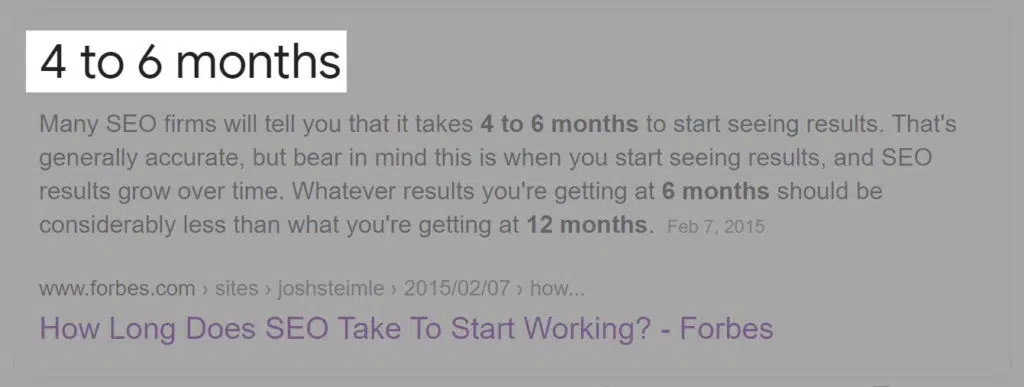
You are also at the mercy of ever-changing search engine algorithms which can pretty much wipe out your entire stream of steady traffic you may have developed overnight.
So if you already have a blog which is getting a good amount of traffic from people in your niche, this is a great strategy.
But if you are just starting off, considering the time it requires to establish it, I would advise against it.
The same goes for YouTube. Over 500 hours of new content is uploaded and published on YouTube EVERY minute.
That means 720,000 hours of new content per day.
Unless you already have a Youtube channel with a great following, you are going to have to put in work and spend time separating yourself from the noise, getting noticed, recording and producing high quality videos.
Educational Platforms
These platforms are great to get known for. But they often price your services very low.
This means you are branded as a low ticket coach and will get traffic that is expecting the same.
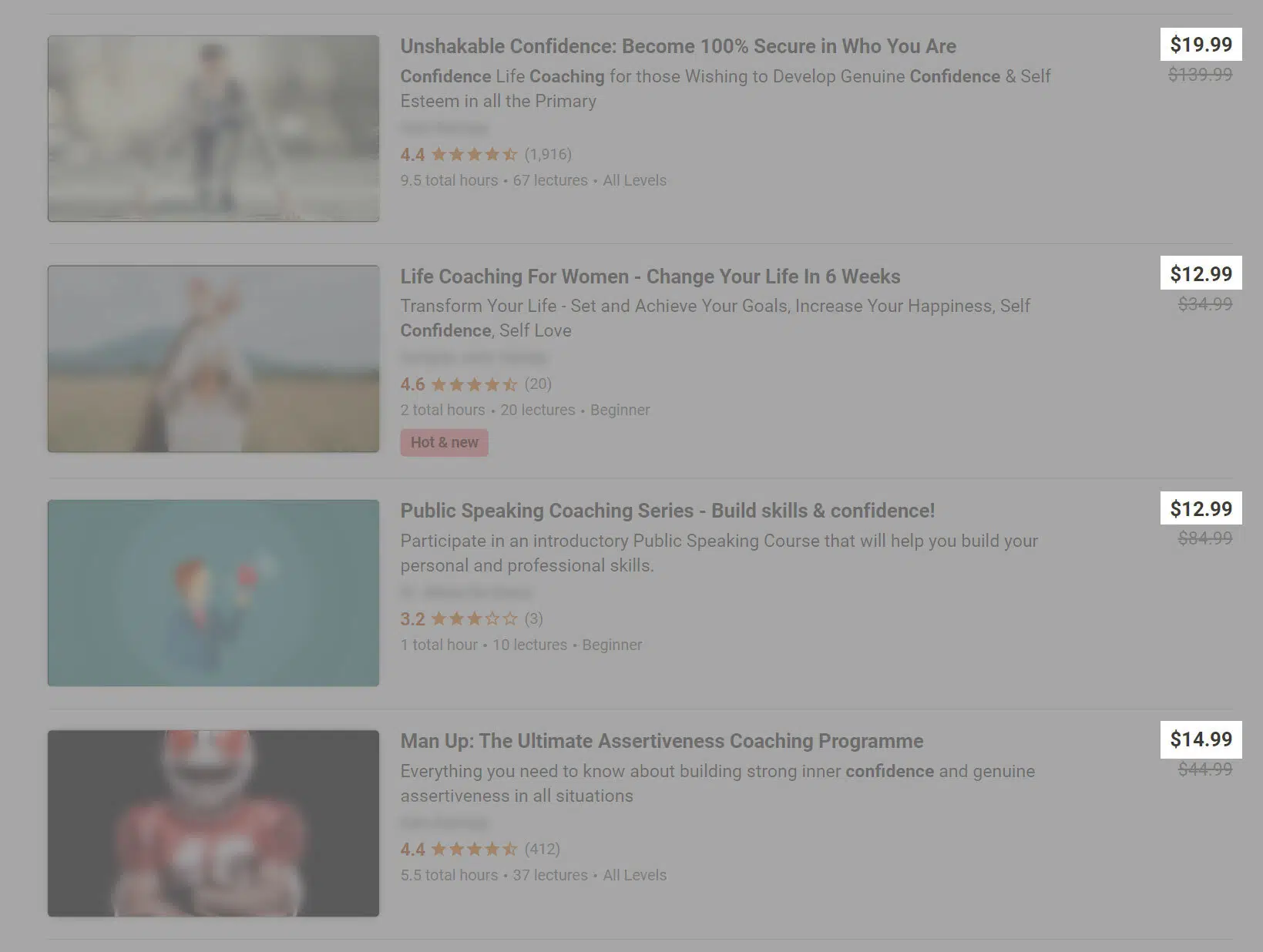
At the same time, you don’t have the flexibility to offer different kinds of packages, especially your premium package which is where you are able to deliver the maximum value.
Viral Marketing and Unconventional PR
In the current saturated market, it’s harder than ever to make something go viral.
There are entire companies which specialize in making content go viral, but even they can’t make it happen every time.
This can really get a lot of traffic coming your way once you crack it. But only a very small amount of this traffic is appropriate for you as a coach as it is generally traffic which is not from your niche.
Speaking Gigs
This can be a fantastic way to get relevant traffic as long as you are ensuring you are speaking on the right stage. But you also have to ensure you are speaking regularly.
The problem here is that, first, you need to go through the speaker sales process and once you land the gig, you have to travel, show up, and speak in person.
That is a lot of manual work and takes up a lot of time. This will be very difficult for you to manage with your full-time job.
Engineering as Marketing
Though this can be a great way to get relevant traffic, you need to invest time and money into developing the appropriate tool or software which is relevant for your niche.
But it does not stop at just developing the tool or software. It must be combined with some other avenue of traffic to get it in front of the right people.
This means it cannot be used as a standalone avenue for generating traffic.
Community Building
While this can be a great avenue for getting traffic, it takes time to build up your community and nurture it.
The downside here is you are building up your community on someone else’s platform. What this means is that you are at the mercy of the platform’s rules.
If Facebook or LinkedIn decide to change the rules about how you can interact with your group, it can make it really hard for you to effectively leverage those communities you have painstakingly built from the ground up.
For example, in September 2020 Facebook changed its policy related to recommending groups related to health. This is bound to be detrimental for coaches in the health niche looking to build their group up.
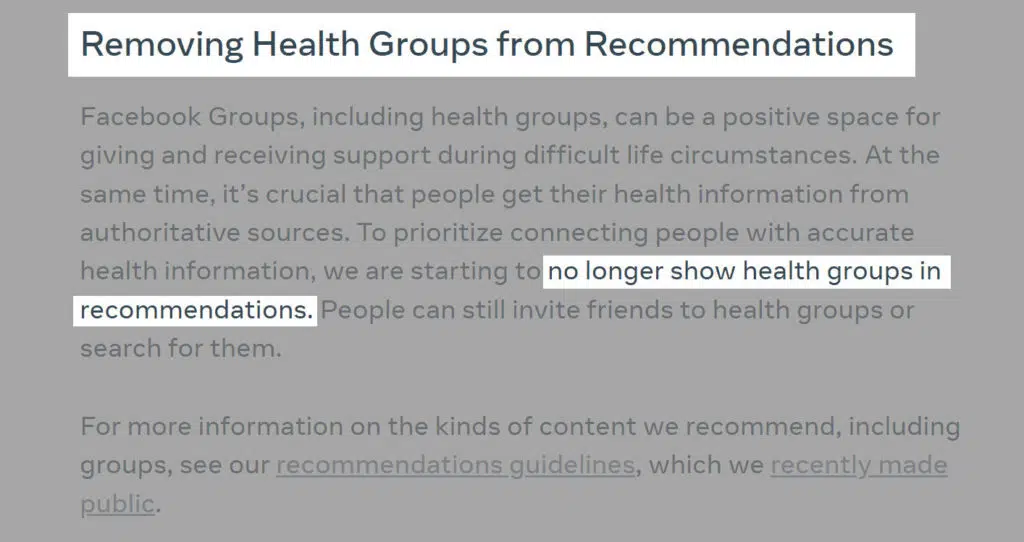
The Best Traffic for Coaches
Referrals and Your Network
When you are starting out, this is the quickest way to start getting clients.
The people in your network often already have trust and credibility for you which can make it an ideal audience to get started with.
You should also approach your existing clients as well as ex-clients for referrals. Don’t be shy. There is no harm in asking and the worst thing that can happen is they say no – which really isn’t as big of a deal as we make up in our heads.
So put yourself out there and tap into your existing network. The power of asking is surprising and you could set yourself up for a few quick wins.
These initial clients will also be able to give you great testimonials which you can use in your future marketing.
The biggest downside here is that after a point you will hit a limit and run out of people to approach as your network is limited.
Joint Ventures
Joint ventures are basically referrals en masse.
The way people react to joint venture promotions is quite similar to how they react to personal referrals.
The great thing about JVs is that they have been building and nurturing their audience over time. This means the people on their list already trust them and find them credible.
So when they refer you, they are giving you some of that trust. Trust is a key factor in being able to get someone as a paying client.
As per the above study by Neilson, people trust referrals and JVs 2.43 times more and 1.46 times more respectively compared to online ADs. And it directly correlates with the rate at which people convert into paying clients.
Another valuable thing about JVs is that you can often negotiate deals where you pay nothing upfront and pay based on the clients you get from the JV promotion.
This means your risk is effectively zero.
I personally find JVs as one of the best ways to start getting clients. So much so that I coach the coaches signing up for my program to use JVs as a primary way of getting a steady stream of paying clients.
CHAPTER 5:
Converting Traffic to Clients
With the right traffic source in place, it’s time to understand how to convert that traffic into clients who will pay you.
The way to convert high ticket clients on autopilot and consistently, is not a dream. What you need is a funnel.

What is a Funnel?
A funnel is basically the process to build trust, credibility, and need.
Trust means they trust that you have something valuable to offer.
Credibility means they know that you are an authority in your space.
Need means they realise they need your product.
There are a multitude of funnels out there.
Different businesses have different funnels. And different funnels are more effective for certain businesses compared to others.
But what is the perfect funnel for a coach?
The Perfect Coaching Funnel
The perfect coaching funnel is split into 4 sections.
The funnel starts off with traffic, which is the relevant and interested audience looking at your content. I’ve covered that in the previous chapter.
Now you have to take those interested people and build up trust, knowing, and liking. This is called conversion.
Post conversion, high ticket coaching requires a one-on-one interaction. They need personal touch.
The way to give them that is through a call where you talk to them and enroll them into what you have and build up the need.
The last step is closing. This is where you sell your coaching package to them and convert them into a paid client.
This is the basic structure of a coaching funnel.
The key is knowing what kind of traffic to get, what type of conversion to use, and what type of call you should have.
So what are the answers to that?
The Perfect High-Ticket Coaching Funnel
This funnel is the result of doing hundreds of tests, many of them costing more than $10,000 to conduct.
I’ve tested multiple traffic sources like ADs, Content Marketing, SEO, Youtube etc. – almost all the sources I have described earlier, tried multiple ways of conversion like courses, ebooks, webinars, quizzes, etc.
What I’ve found is that there is one funnel which far outperforms any of the other funnels.
I’ve tried it with hundreds of coaches in varied niches and it’s worked and proven itself time and again to generate leads on demand.
If you are a coach who is just starting out, you have not established your name yet and do not have credibility.
So the traffic you need to generate is one which has an element of trust for you. As I mentioned earlier, traffic from joint ventures fits the bill perfectly.
For the next step, when it comes to establishing yourself as an expert and moving traffic effectively towards a call, the best way I have found is a webinar.
When someone goes for a webinar, they have to sign up, put it in their calendar, show up at the right time, and sit through the entire webinar.
So compared to a video, ebook or a quiz, you are getting a very strong intention. And the people who show up for the webinar, typically pay attention and a good percentage of them stay till the end.
So when you pitch the call at the end, the people who have watched your webinar till the end are very likely to book the call and convert into paying clients.
So there you have it, the perfect coaching funnel which will deliver a steady stream of high paying coaching clients.
CHAPTER 6:
Balancing Your Day Job and Your Coaching Business
Now that you know how to identify a niche you know will work all the way to the perfect funnel to start getting clients consistently, a lot of action steps would have already opened for you.
But before you get into action, there’s a very important thing you need to get right – balance.
It’s critically important for you to figure out how to manage your time effectively so your job does not suffer and you continue making steady progress on your business.
So how can you do that?
That’s what I will cover in this chapter.

Establish a Routine
Look at your calendar and block out all the time you need for your day job, commute, errands, meals, sleep and anything else that is essential.
Now optimize things that you can do in this. Are you going out to get groceries every couple of days? Will it make sense to get them done once a week instead?
Things like these are going to free up more time in your schedule. This means more time for you to dedicate to working on your business.
Now with things optimized, create dedicated slots for working on your business. These slots could be before or after your job hours and on weekends.
Mark this on your calendar. You shouldn’t have to wonder about when you will be working on your business. There should be no decision-making involved here, it should already be a given.
Studies show it takes 66 days on average for a new thing to become a habit.
Create a schedule and stick to it.
For example: Create a dedicated 15 minute time slot every evening at 7:00 pm where you plan out what you will do the next day.
A dedicated time slot of 30 mins at 6:30 pm for checking and replying to emails. Ensure you check emails only during this time slot.
Remain consistent and you will end up building powerful habits.
Set your priorities
Now that you know WHEN you will be working on your coaching business, the next step is to figure out WHAT you will work on.
Have clearly defined priorities beforehand. You don’t want to sit to work and then wonder what you are going to work on. Plan in advance what you are going to do.
Do things which will move the needle for your business and will actually get you results.
It’s easy to fall into the trap of being busy. Work smart while working hard.
As per the above survey about side hustles, time, energy, and focus combined are the biggest challenge for people engaging in side hustles.
For example, don’t devote a lot of time to designing and redesigning a logo or a website to get it perfect. It doesn’t really matter in the grand scheme of things. Instead, talk to people in your niche to identify the nuances of their pain points. This will help you create your coaching program.
Setting priorities as early as possible, also helps you to focus. This way you don’t have to switch between tasks.
A simple but effective way to prioritize is the priority matrix.
Be good at the job too
With all the time and energy you are giving to working on your coaching business, ensure that you don’t let your performance at your current job suffer.
While working, focus totally on your job. Your side hustle should not distract you from your work.
The above survey suggests the average office worker is productive for less than 3 hours of a typical 8 hour workday.
That’s less than 30% of work time. This means you could increase your productivity by over 3 times of what it is currently while working the same number of hours.
This will enable you to perform better and not put in long hours at your job, hours that will eat into the time you have scheduled for working on your business.
Remove distractions and be more effective at your job.
Have Fun
Don’t spend all your waking hours working.
Remember to allot time for leisure and to have some fun. Consciously make time for your family, and for yourself too.
Read about the concept of burnout and ensure you don’t end up there.
Taking breaks and rejuvenating yourself will actually help you be more effective overall.
CHAPTER 7:
The Major Risks
Building a full-time job with a coaching side business is not easy. There are risks involved.
You must make sure that you do your best to avoid risks. In this way, you can avoid putting yourself in unnecessary and avoidable situations.
But what are these risks and how can you avoid them?

Quitting your job at the wrong time
Are you feeling ready to dive in head first in this journey of building your coaching business?
I’m sure you are eager to see yourself switch from an employee to an entrepreneur in pursuit of the life of your dreams?
Do you feel it’s the right time to turn in your papers and resign?
Hold on right there!
Before you take any drastic steps, you need to take stock of where you are. You might be taking a huge risk you’ll be regretting for a long time.
How to avoid it?
Be practical.
Yes, your coaching business can sustain you, but it can take some time to get there. But till it does, you have to keep earning regularly because bills and payables are not sympathetic to your financial situation, they will keep coming.
So when is it the right time for you to quit your full-time job?
Do not make an emotional decision. Maybe you have experienced some form of dissatisfaction or have been in unpleasant situations at work. Your emotions might be getting the most of you, and could be influencing your decision.
You might have started getting some traction on your coaching business. In your head it might feel as if it is validated. You may be convinced that you are finally going to get a steady stream of clients through and through. But has it grown enough to sustain you financially?
And on the other hand, if your coaching side hustle is not doing so well, you might feel the reason is you are not focusing on it full-time. Don’t fall into that trap.
You must make a data driven decision about this.
Remember, your day job is what is making it possible for you to build your coaching business.
Take some time and gather your bills or financial statements for the last few months. If possible, for the last 12 months.
Go through it and list out in detail all your expenses. Be comprehensive and don’t miss anything out.
Make sure you take into account your utility bills, insurances, mortgage payments, loans, groceries and anything else. Also don’t forget annual or semi-annual expenses.
Now using all these, calculate your actual monthly spend.
Different people have different risk appetites based on their age and life situations.
But a general rule of thumb I agree with is that your coaching business should be generating enough profit to cover your monthly expenses consistently.
By profit I mean the money coming in from your coaching business minus all the expenses it takes to run it.
By consistently, I mean, not just one good month. It should have a track record of generating enough profit for at least 4-6 months.
Another option is to go part-time at your job instead. It’s surprising how many employers will be open to you working part-time.
Even more so if you are a valuable resource in the company. You can leverage that and eventually work part-time in your day job and focus on your coaching full-time.
You don’t want to quit your job, work on building your business and then have to quit that because you have run out of money to sustain yourself or the business.
It’s a marathon, not a sprint.
The Legalities
After putting in so much time and effort into building your coaching business, the absolute worst thing that can happen to you is get embroiled in some legal trouble.
Getting sued and everything that follows it, is no doubt very expensive. But it also has the intangible repercussions of causing you immense stress and wrecking your morale.
And on top of that, you don’t want to risk your day job. That’s what pays the bills (at least for now) right?
So, what are the legal risks and how can you avoid them?
Taxation
The income that you make from your coaching activities are not exempt from tax.
Ensure that you are declaring it and paying taxes as required and on time, so as not to end up on the wrong side of the tax authorities and get implicated with tax evasion or tax fraud.
Know What You Sign
There are agreements an employer would have asked you to sign.
A few common ones are:
Employment Contract – An agreement entered into between an employer and an employee at the time the employee is hired that outlines the exact nature of their business relationship
Non-compete agreement – an agreement not to enter into competition with your employer
Non-solicitation agreement – an agreement not to solicit your employer’s clients or employees
Non-disclosure agreement – an agreement to keep your employer’s private information confidential
It’s essential that you review all the documents you have signed, including the fine print. Get legal counsel for this and ensure you are not violating any of these.
Intellectual Property
Intellectual property (IP) is a broad term for intangible (non-physical) assets owned and legally protected by a company from outside use or implementation without consent.
You might end up using knowledge or know-how you have gained from your current day job in your coaching.
Ensuring you are not stepping on any protected IP of your employer while building your coaching business can be tricky due to the very definition of intellectual property but is very relevant.

Don’t use the Company Assets
I cannot stress this enough. Do not use company assets to work on your side hustle.
This includes things like your company laptop or workstation, email addresses, software your company might use.
In addition to that, do not use your company time to work on your business either.
Aside from being unethical, it can be likened to a breach of your employment contract. And if discovered, can open up a can of worms which can lead to you being laid off, some legal action raised against you, and even the employer claiming ownership over the business you have worked so hard to build.
Under certain circumstances, the employer can even claim copyright in works created by employees even outside of work hours.
Even bouncing ideas around with your coworkers could trigger an ownership claim from your employer. So be careful while doing that.
Safeguard Yourself Against Liabilities
There are many business structures like Sole Proprietorships, Partnerships, LLCs, etc. which you can choose from for your coaching business.
Choose an appropriate structure for your business. For example LLC stands for a Limited Liability Corporation which ensures that you are not personally liable for your coaching business’ debts or liabilities and thus safeguard yourself, your family and your assets.
Getting into legal trouble is the last thing you want as it can effectively mean the death of your coaching business. So make sure you always stay on the right path. It’s a lesson best not learnt the hard way.
As the laws and policies for different places and companies are unique and often complex, ensure you get qualified legal counsel to address all the above points.
CHAPTER 8:
The Entrepreneurial Mindset
Many aspiring coaches are immensely successful in their corporate careers but they fail in building their coaching side hustle.
Often, it is because of the mindset.
Nurturing the right mindset is one of the most important investments you can do for and by yourself.
You need to shift your mindset from that ofan employee, to an entrepreneurial one.
Let’s understand what this means, and how you can do it.

Have a beginner’s mindset
Wherever you may be along the corporate ladder in your day job, keep in mind that with regards to your coaching business, you are like an intern.
You might have a more specific or specialized job role which you are great at in your current day job, but that will not be the case while building your own business.
You have to learn a lot and wear many hats.
From ideating to marketing, to selling, to delivering, and everything else in between.
Try to learn as much as possible about your industry. Focus on learning from various people about their industry. Keep thinking of how you can implement your learnings practically for your business.
Embrace Failure
Many day jobs have a limited exposure to failing. And as you become better at your job and specialize, your propensity to fail decreases too.
The downside of that is you become used to not failing and forget how to overcome failure.
Be conscious of that.
As you build your coaching side hustle, because you will be putting yourself out there and doing things you are not an expert in, you will fail more often.
In the process of building your coaching business you will face multiple rejections and failures.
Don’t let failures discourage or dishearten you.
Similarly, you will face a lot of rejections.
When someone says “No”, remember they are saying no to your proposal and not to you as a person.
Failing and rejections are part of the game. Don’t get demotivated and quit because of them. Embrace them and learn from them by logically analyzing them by asking “why”.
Get Comfortable With Selling
It’s likely that your day job does not involve selling.
Most coaches have the notion that selling is bad and even avoid using the term like the plague. There are various stereotypes and mental blocks attached to selling.
Selling is not about being a sleazy salesperson. Nor about putting pressure on the client by using different tactics.
It is about adding or bringing out value for the other side so that they understand that you deserve the money they are paying.
Selling is just an exchange of value for money.
If you can add value to their lives and transform their situation to where they want it to be, they will pay you willingly.
Be at peace with money and asking for it.
Realize that money is a tool.
You may get a lot of prospects who will want sessions for free.
Realize your worth and what value you bring to the table for your clients.
Value Your Time
Your time is your most valuable asset. This is even more relevant as you are managing your day job along with your business.
“Time is the most valuable thing one can spend.”
– Theophrastus
Don’t keep giving out coaching sessions for free.
If you give out free sessions to anyone who books in, that will end up turning into a massive waste of your time.
Have preset rules about free sessions.
Limit the number of free sessions you will give out and pre-qualify the people you give them to using a questionnaire.
This is how we do it. Anyone who books in a session with us is sent a pre-qualification questionnaire.
Analyzing their answers, we can gauge right away if they are the right fit, if they will be able to pay us and if they will be ready to put in the work we require them to.
You can download the exact questionnaire we use here.
You don’t want to give out free sessions to people who are not a good fit for you or who don’t have the capacity or tendency to turn into paying clients.
Actively seek objective and expert feedback
Often we are too close to what we are doing to see what’s missing or not working.
Many times, we don’t know what we don’t know.
This is why feedback is important.
But not feedback from just anyone.
For example, don’t ask your accountant friend for feedback about your website.
Unqualified people often give opinions which don’t work because they don’t have the domain knowledge or expertise to give you relevant feedback.
That’s a recipe for endless tweaks which may take you even further from what you need to do and have you running around in circles, getting nowhere.
For example, in the early days of this business, I asked a friend who was a corporate executive for feedback on one of my first online sales presentations.
She worked with presentations a lot in her corporate career, but had never sold anything online.
She told me to condense my 100 slides into less than 10.
She was looking at it from her perspective of what worked for her during corporate presentations where the slides are full of information whereas each of my slides had just a few words – which is perfect for a sales or marketing presentation.
I’m glad I didn’t listen to her.
That product launch took the business from making $500 to making $13,000 per month in just a few months.
If I had listened to her advice, that product launch would not have been successful and this business would probably not have been anywhere close to where it is now.
Listening to that unqualified feedback would have been a terribly costly mistake.
Seek expert feedback.
Ask your accountant friend to go over your business’ financial statements.
Ask a conversion expert about your website.
Ask people in your target niche to validate your coaching offerings and if that is something they would pay for.
I do the same for my clients. The experts on my team build their online coaching business end-to-end and then these same experts also guide and advise my clients on every aspect of their business on an ongoing basis.
This helps my clients leverage industry expertise, and avoid costly and time-consuming mistakes.
Expert feedback helps you to realize what is going wrong and helps you get you closer to making your coaching business become sustainable and thrive quicker.
CHAPTER 9:
Advanced Tips
In this chapter, I will share with you my top tips which are sure to help you achieve concrete results faster and with more ease.

SMART Goal Setting
Goal-setting is a great way to ensure you are focused and intentional about the work that you do.
There are short-term goals and long-term goals. It’s important to have both.
The long-term goals help you set yourself in the right direction and allow you to course-correct when required.
The short-term goals allow you to get into a habit of developing positive habits and get quick wins which are highly motivating and keep you going.
A great framework for goal formulation is the SMART goal setting.
SMART stands for Specific, Measurable, Achievable, Relevant, and Time-bound.
Specific
Your goal should be CLEAR and Specific. While making your goal specific, try to answer the five 5 “W” questions:
WHAT do I want to accomplish?
WHY do I want to accomplish that?
WHO are involved?
WHERE is it located?
WHICH resources or limits are involved?
Example: I want to become a successful workplace coach and create a profitable workplace coaching business. I have the skills and expertise to coach workplace coaches in the finance domain.
Measurable
Set measurable goals. Measurable goals help you to track your progress and stay motivated. When you set milestones and achieve them it builds confidence.
Ask the questions below to set measurable goals:
How much do I want to achieve?
How many do I want to achieve?
How will I know that I have accomplished what I set out to?
Example: I want to achieve 5 clients by the end of January. I will make $5000 by the end of January.
Achievable
You should be practical while setting your goal. Your goal should be realistic and attainable. An achievable goal will have the answer to the questions below:
How realistic is the goal?
Is the goal attainable?
Can I achieve the goal with my current constraints like time and finances?
Example: I have the infrastructural and financial abilities to get 5 clients by the end of January. I also have the skills and expertise in the financial domain to coach employees in the workplace.
Relevant
Your goal should be relevant. Make it relevant to your needs and desires. Don’t get swayed by other people’s opinions.
Answer the questions below to make sure that your goal is relevant.
Does the goal seem worthwhile?
Does this match your needs?
Is it applicable to the current situation?
Example: I have 5 years of relevant experience working as a financial risk analyst. Coaching employees in the same domain will help me to pursue my goals and also earn phenomenally. Since currently, I don’t have any clients, it doesn’t seem relevant to quit my job.
Time-Bound
All the goals must have target dates. Deadlines help you manage your priorities well.
A time-bound goal will answer the questions below:
When will I achieve the goal?
What can I do in the next 6 months?
What can I do today?
Example: I will achieve 5 clients by the end of January, and earn $5000 by the end of this month. After 6 months, I will start making the amount equivalent to my current job’s salary. I will begin from today and finalize my coaching niche.
Get an Accountability Buddy
A study by the Dominican University of California showed people were 77% more likely to achieve their goals with an accountability system in place.
Declaring goals, giving regular updates, and being accountable to someone, leverages the power of social expectations.
People tend to work harder, persist more, and be more intentional.
About a year ago, I started incorporating weekly accountability workshops for the coaches who sign up for my program.
It’s got them into action like never before and I’m repeatedly astounded by how frequently they achieve unprecedented results for themselves.
Avoid Noise
Most people selling advice related to coaching are doing just parts of it. Just how to make a website, how to sell etc.
As you can see above, for an online coaching business to work, it needs multiple systems working smoothly together.
Technology is not fun when it doesn’t work the way you want it to and have to figure it out yourself.
Get a mentor or someone who can guide you and give you end-to-end methodology and systems. That is immensely more valuable than taking parts from multiple places and trying to fit them all together.
This will save you a ton of time on avoidable research and integration headaches.
Time Management Techniques
While building your coaching side hustle, your time is your most valuable resource.
It is essential you use it efficiently. These are the 2 time management techniques which are quite easy to implement but will have a great impact on how effective you are.
Time Blocking
Time blocking is where you divide up your day into multiple segments or blocks. Each block is dedicated to focusing on a particular task, or a group of tasks.
Set up your day in advance with the relevant time blocks for what you plan to get done on that particular day.
This way you don’t have to make choices about what you are supposed to do which can easily cause decision-paralysis leading to you being less effective and wasting your time wondering what you should do instead of actually doing it.
Pomodoro Technique
The Pomodoro Technique is one where you work for 25 minutes and take a break for 5 minutes and then repeat.
I personally love this as it allows me to be supremely effective and work in short bursts but also take the necessary breaks in the middle.
The key thing here is to avoid distractions while you are in your 25-minute work “sprints”.
Research shows that it takes 20 minutes to go back “in the zone” from context switching.
This means, every time you get distracted and check those notifications on your phone, it takes you about 20 minutes to get back to working at the same level before you got distracted.
There are many more time management techniques out there with varying effectiveness.
The point is to find one that works for you and stick with it.
Triage Calls
Triage calls are a very effective way to identify leads who are a good fit for you while optimizing the time you spend talking to them.
A triage call is a short 20 minute preliminary call. You do not try to sell or close the lead on this call.
Instead, you qualify the lead and assess whether they are a good fit for your coaching, if they will be able to pay you and if they are right to move ahead and have a longer call with.
Though it may seem counterintuitive to have 2 calls to close someone as a client, it actually saves your time as you don’t end up spending a lot of time talking to people who you have identified to not be a good fit.
I’ve done this for over 20,000 leads and it’s worked so well that I still do it and recommend it to all my clients.
Previously when we were doing what most other people were doing and advising to do, which is close people on a single call, we found out that out of every 5 people, 3 to 4 of them were not qualified.
But we would spend 90 mins for each of them.
But by implementing the Triage call methodology, we would still get the same amount of people signing up in the end but we would spend a LOT less time talking to the unqualified leads.
The same outcome with a lot less time spent.
Outsourcing
Being a solo entrepreneur building a coaching business while handling a day job at the same time, you are surely going to be pressed for time.
You might find yourself doing many less skill-centric tasks day-to-day which don’t really need your expertise or attention.
These are the tasks you should outsource to virtual assistants (VAs).
They are quite reasonably-priced, and it will help free up your time from tasks that don’t require your unique knowledge and expertise, thus allowing you to instead work on things for your business that need more of your high-level attention.
Employing VAs is a simple and straightforward tactic which can quickly give way more returns than what you pay for.
A company I use and would highly recommend is TaskVirtual.
CHAPTER 10:
Case Studies
Now it’s time for me to show you some real-life examples of coaches whose journeys I feel privileged to be a part of.
These case studies are not of the world-famous coaches you might have already heard of.
But rather these are coaches just like you who were working full-time but succeeded in building their coaching business as a side hustle, which eventually allowed them to leave their jobs and get into coaching full-time!

Case Study – Kaley Zeitouni
Let me tell you about one of my clients and friends – Kaley Zeitouni
You can watch her talking about her journey here.
Kaley worked for years as a therapist in her 9 to 5 job. It was a stable job and she was well-paid.
But she kept feeling that her full-time job wasn’t really fulfilling for her.
She felt limited by her job as a therapist and wanted to add more value to her clients.
At the same time, she realized that coaching is a better process than a therapeutic one. She discovered that coaching would help her to add more value to people’s lives and in turn find fulfillment for herself as well.
So she used the skills and expertise she had as a therapist and started her coaching business while holding on to her full-time job.
She became action-oriented and slowly but steadily kept working on it.
She knew what she wanted but she didn’t know the steps she needed to take. She took advice from other people but that just made her feel even more lost.
There were countless times when she felt overwhelmed and felt everything wasn’t working as she envisioned. But she persevered.
A few months in, she signed up for my program. She trusted herself and our process and worked diligently at it. She kept herself accountable.
Through the program we helped her find her perfect niche, package her coaching, build her website and funnel, and start landing JV promotions.
She started getting high paying clients who were excited to work with her. She delivered amazingly and kept them on as raving fans.
And in just a few months, she started earning more, and consistently, from her coaching business than from her full-time job.
And that’s the point when she took the leap and resigned from her day job. And she has not looked back since!
This is just one example. There are many more coaches out there building their coaching businesses while maintaining full-time jobs.
Amanda Pickering started a health coaching side business while working for 18 months with a full-time job.

Nagina Abdullah runs MasalaBody that makes more than $12k every month and she still has a full-time job.

If they can do it, so can you!
You just need to do one thing to make it happen – START!
Conclusion
Congratulations on finishing this guide!
By going through this guide you have put yourself in a place where you are much more likely to succeed in creating a successful coaching side hustle, and move a step towards your dreams while holding on to your day job.
Start taking all the action steps in this guide. Don’t just read, begin implementing.
Remember, Rome wasn’t built in a day!
Start now, remain consistent, and build an empire for yourself.
Have you nailed your niche? Do you think there is something I have missed? Do you have any questions which were left unanswered?
Let me know in the comments and I’d love to address them.
Frequently Asked Questions (FAQs)
What is considered full-time work?
A duration ranging from 35-40 hours per week is considered as full-time work.
How many hours is full-time employment?
The US Bureau of Labor Statistics (BLS) defines full time as at least 35 hours.

Download a FREE PDF version of this guide…
PDF version contains all of the content and resources found in the above guide.




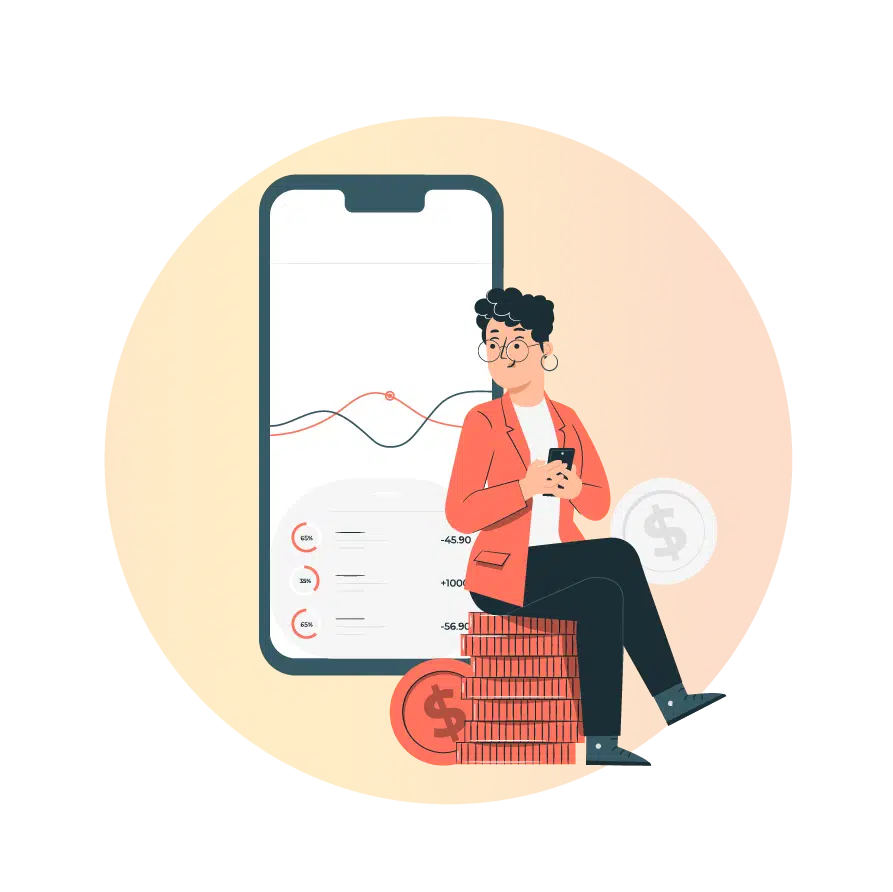
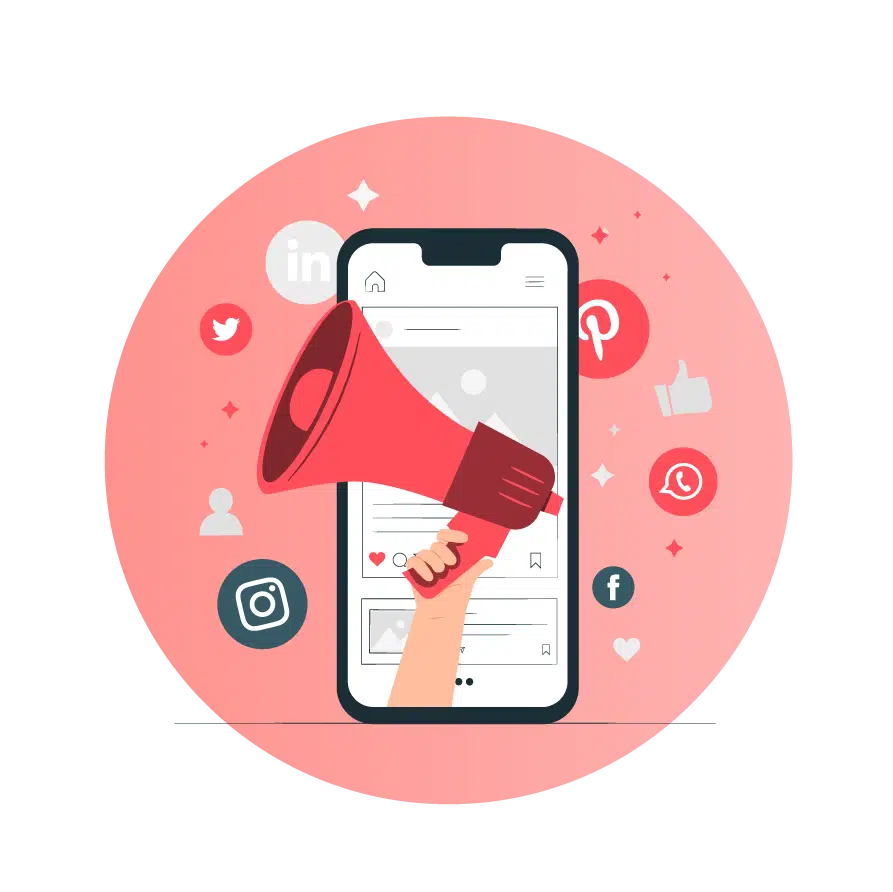







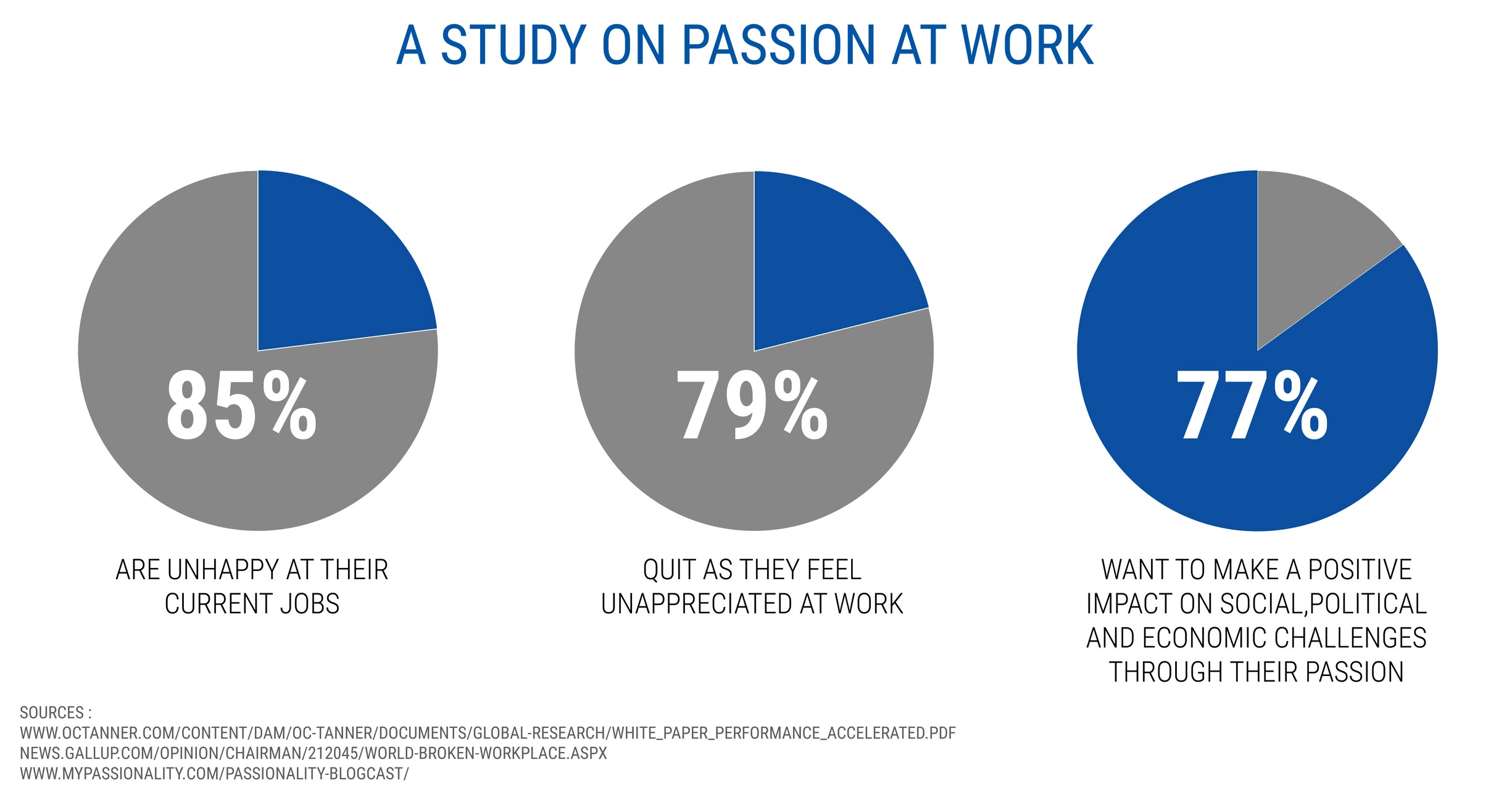

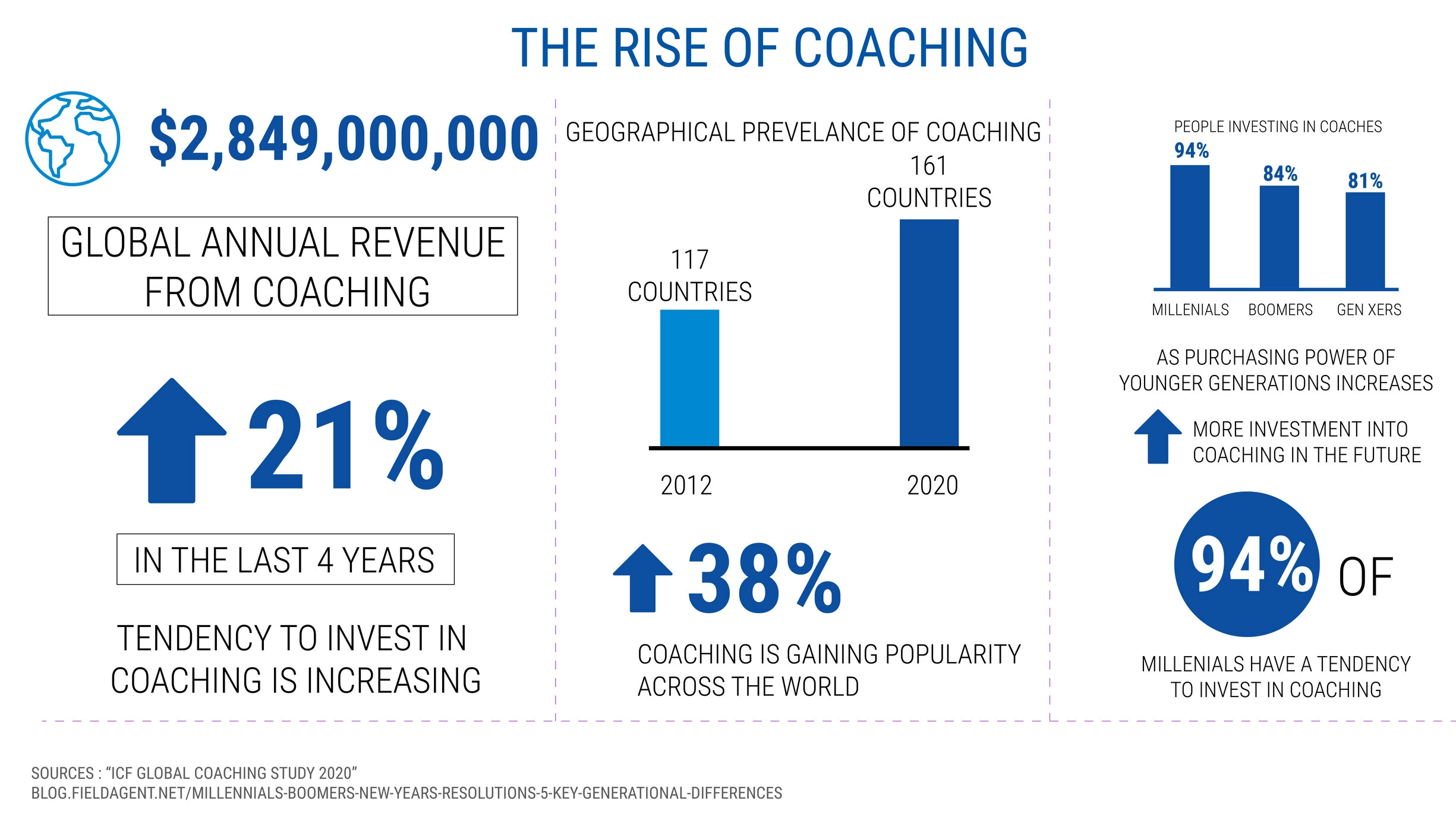


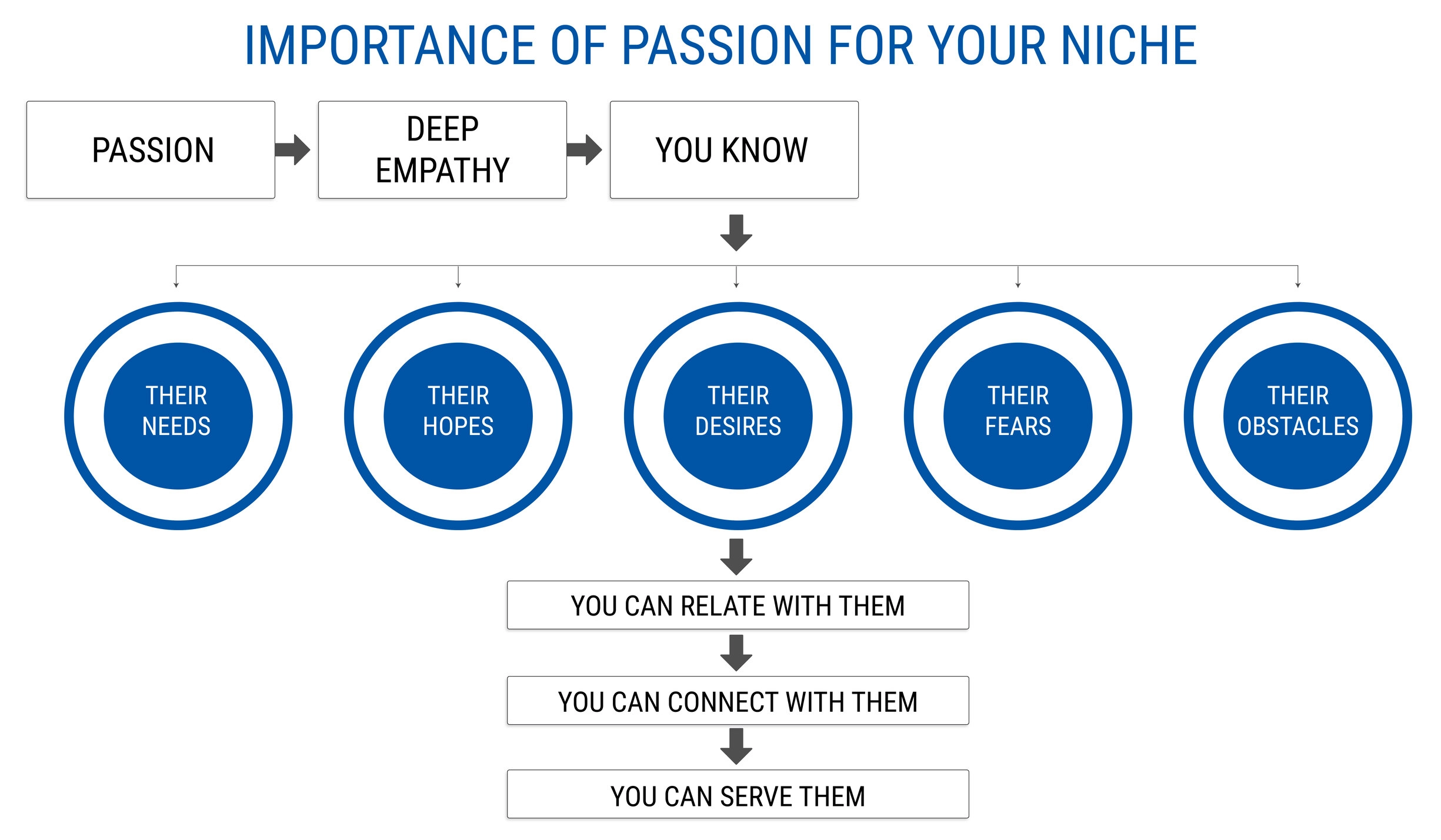
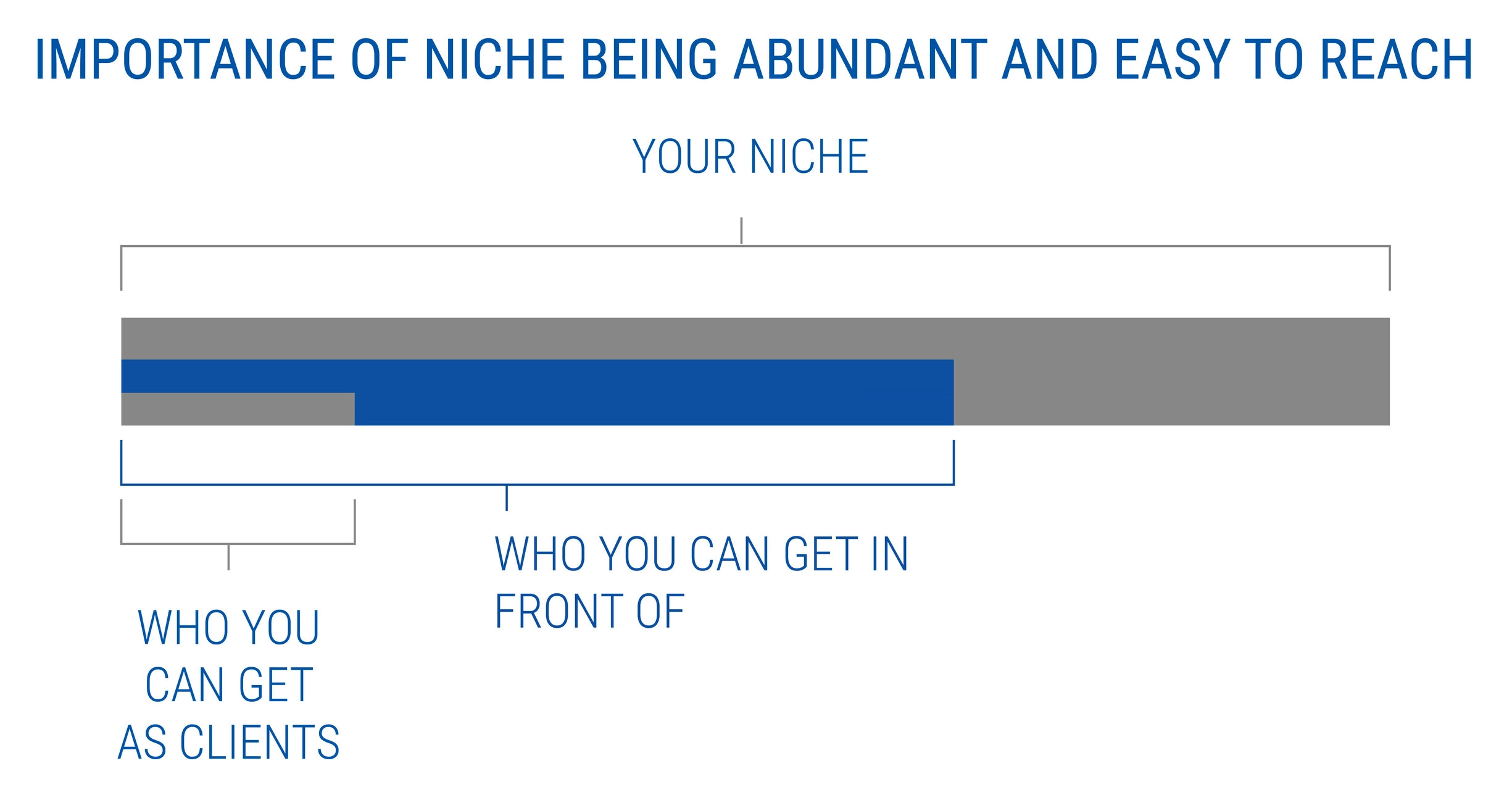
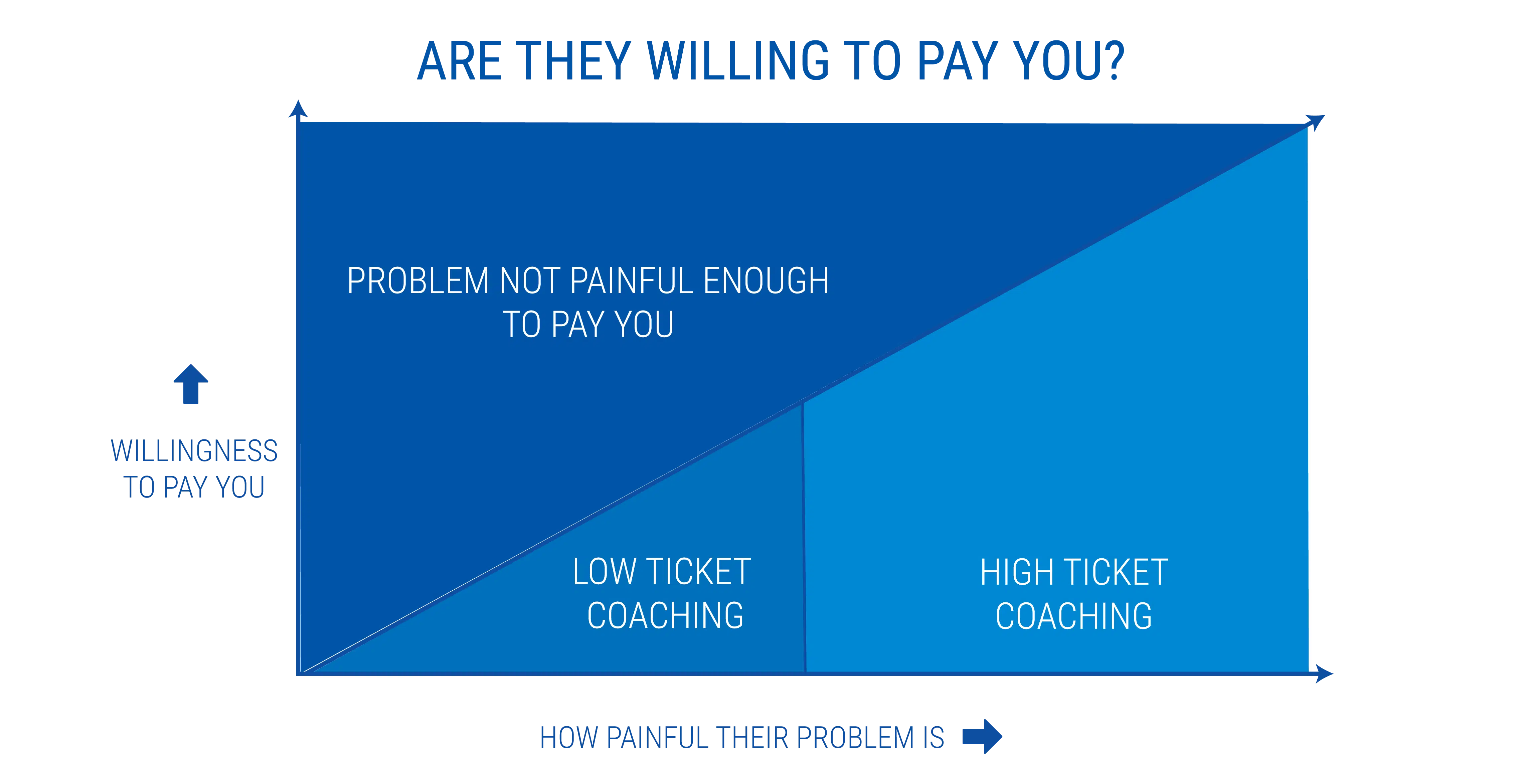
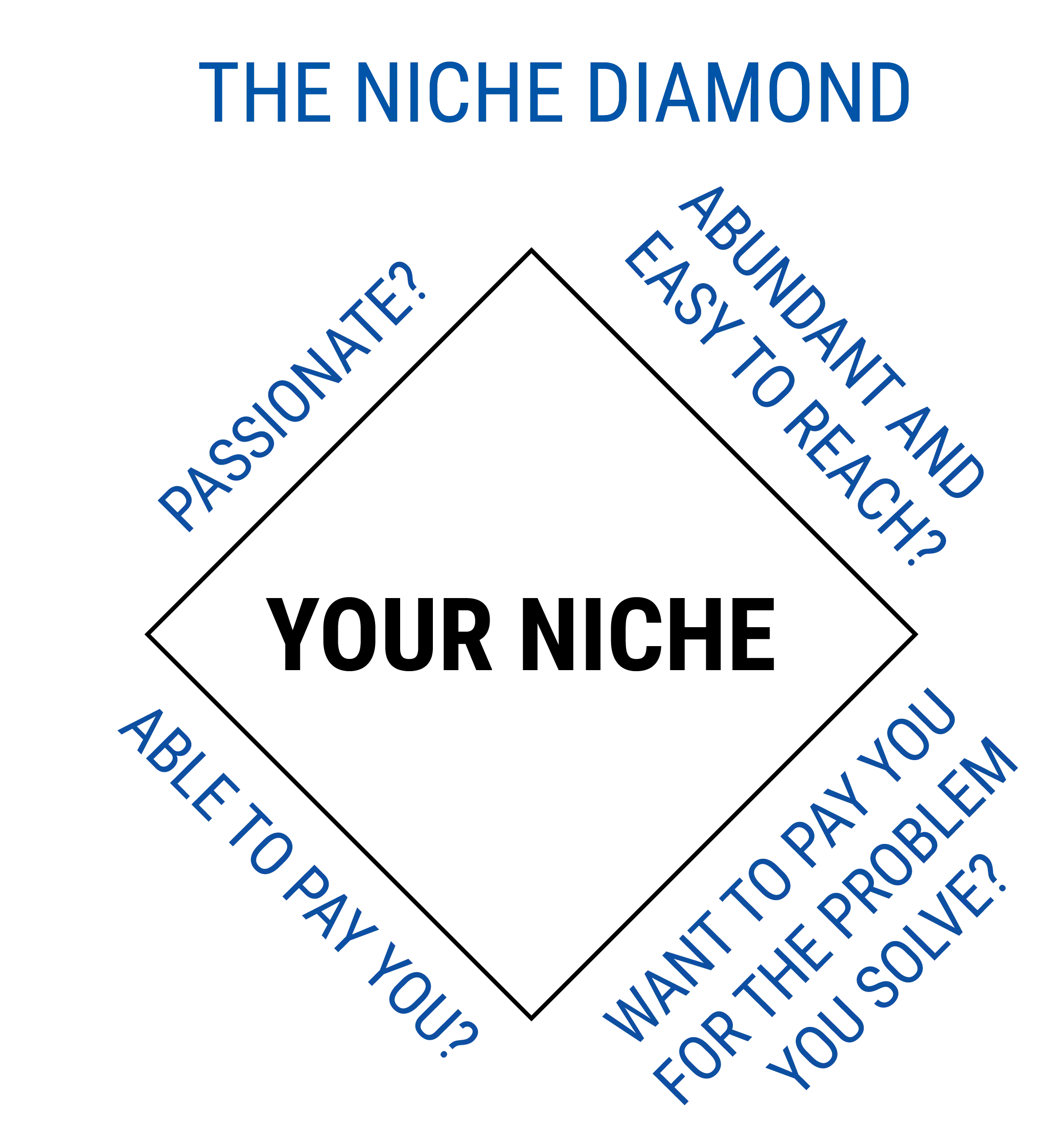
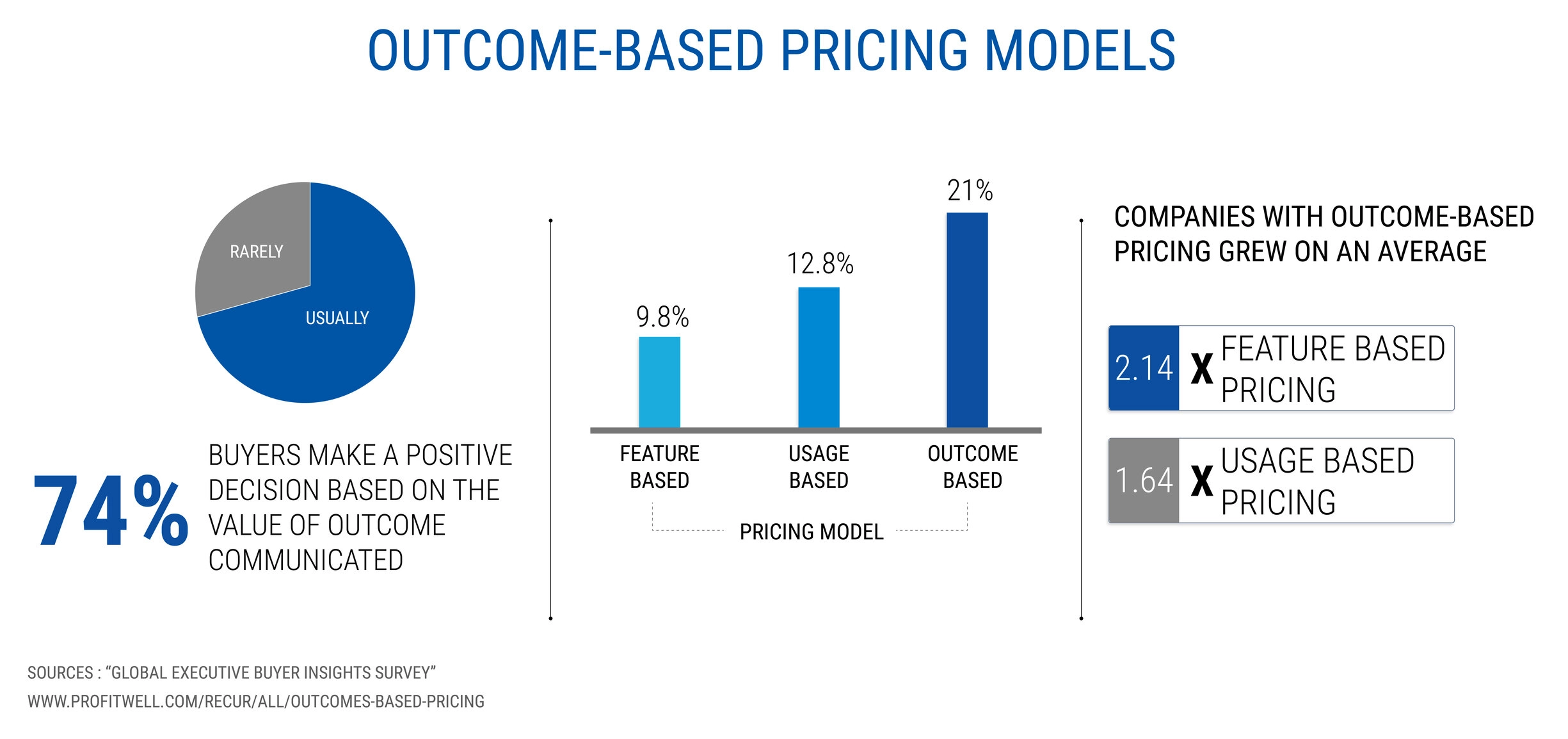
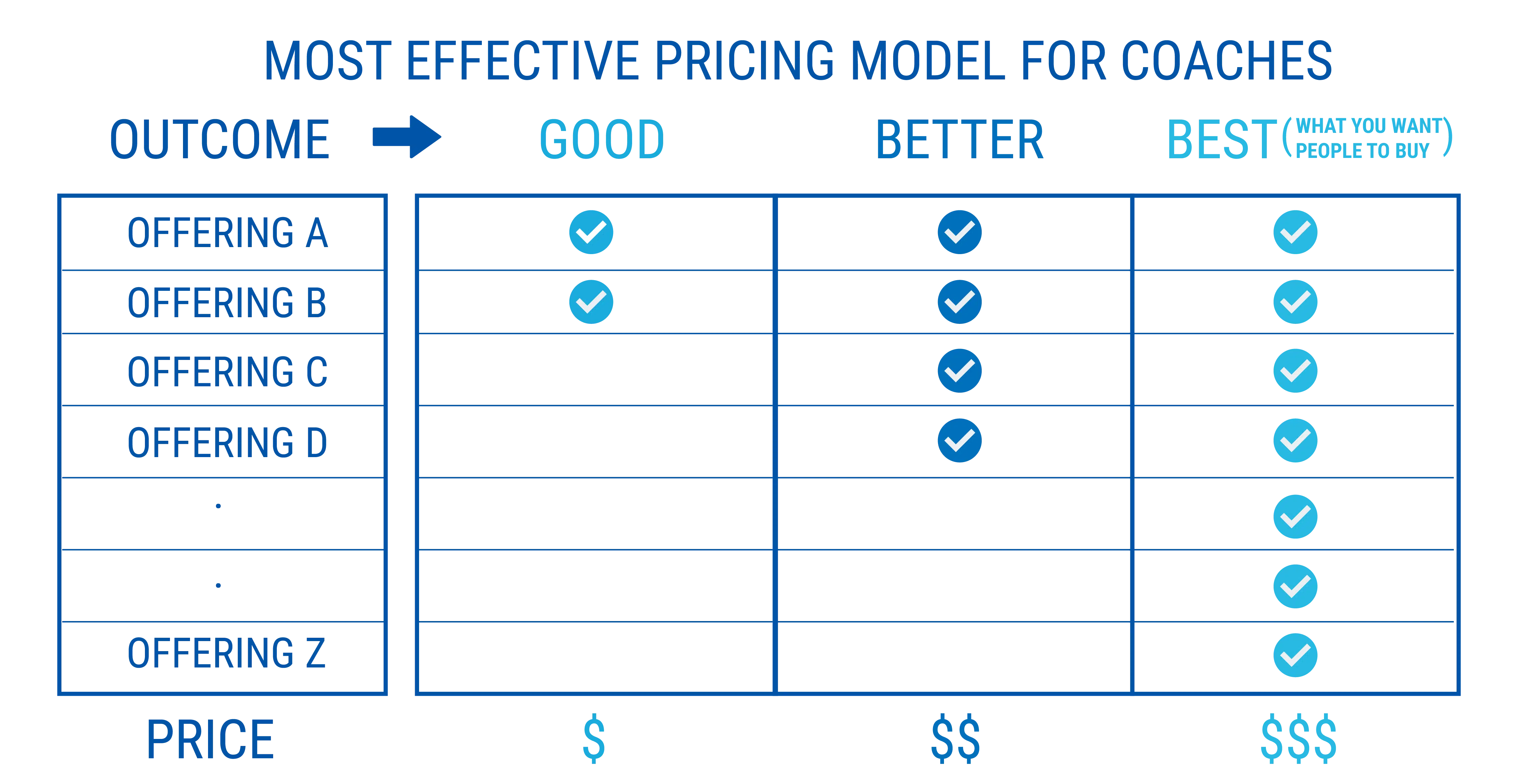




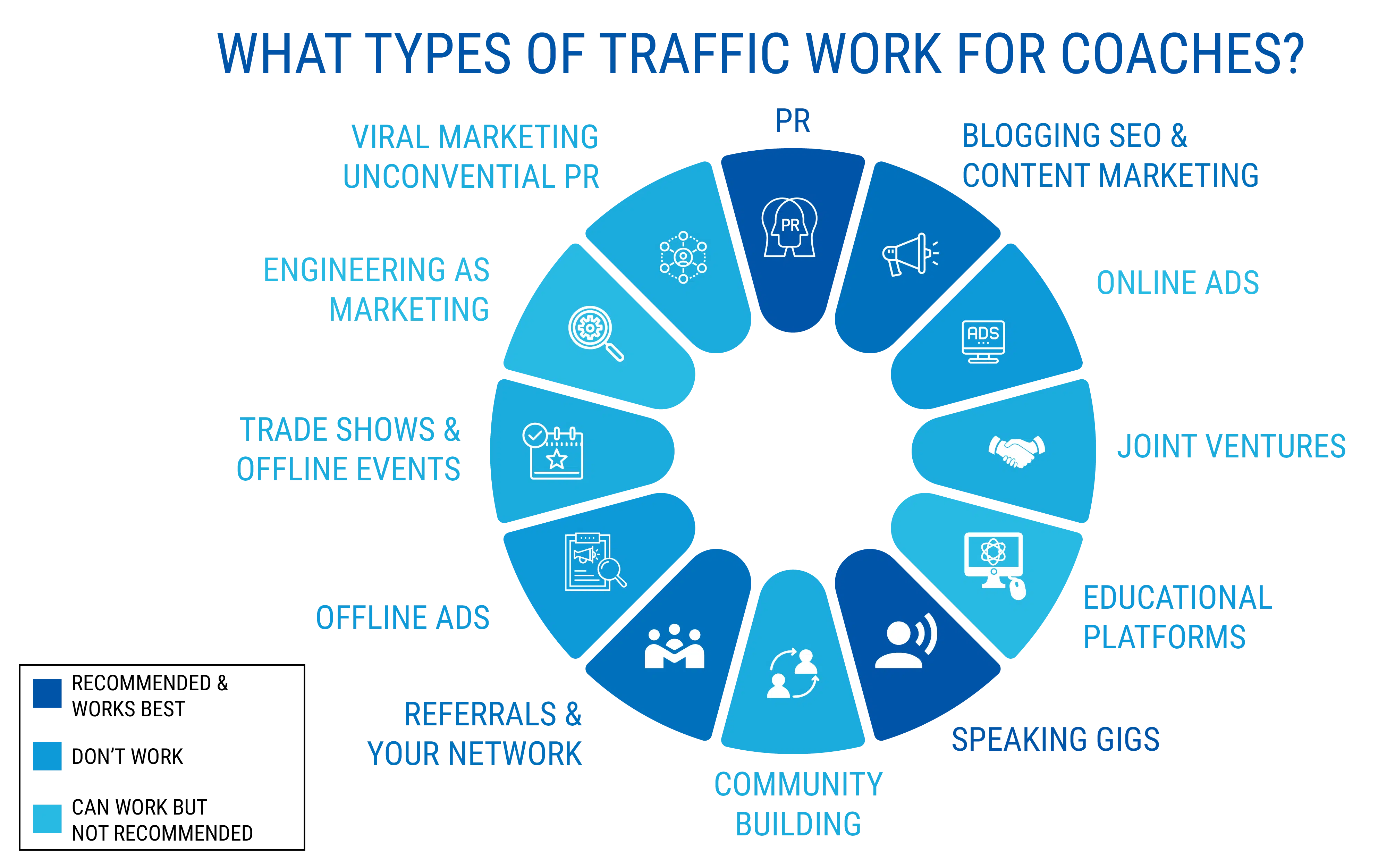
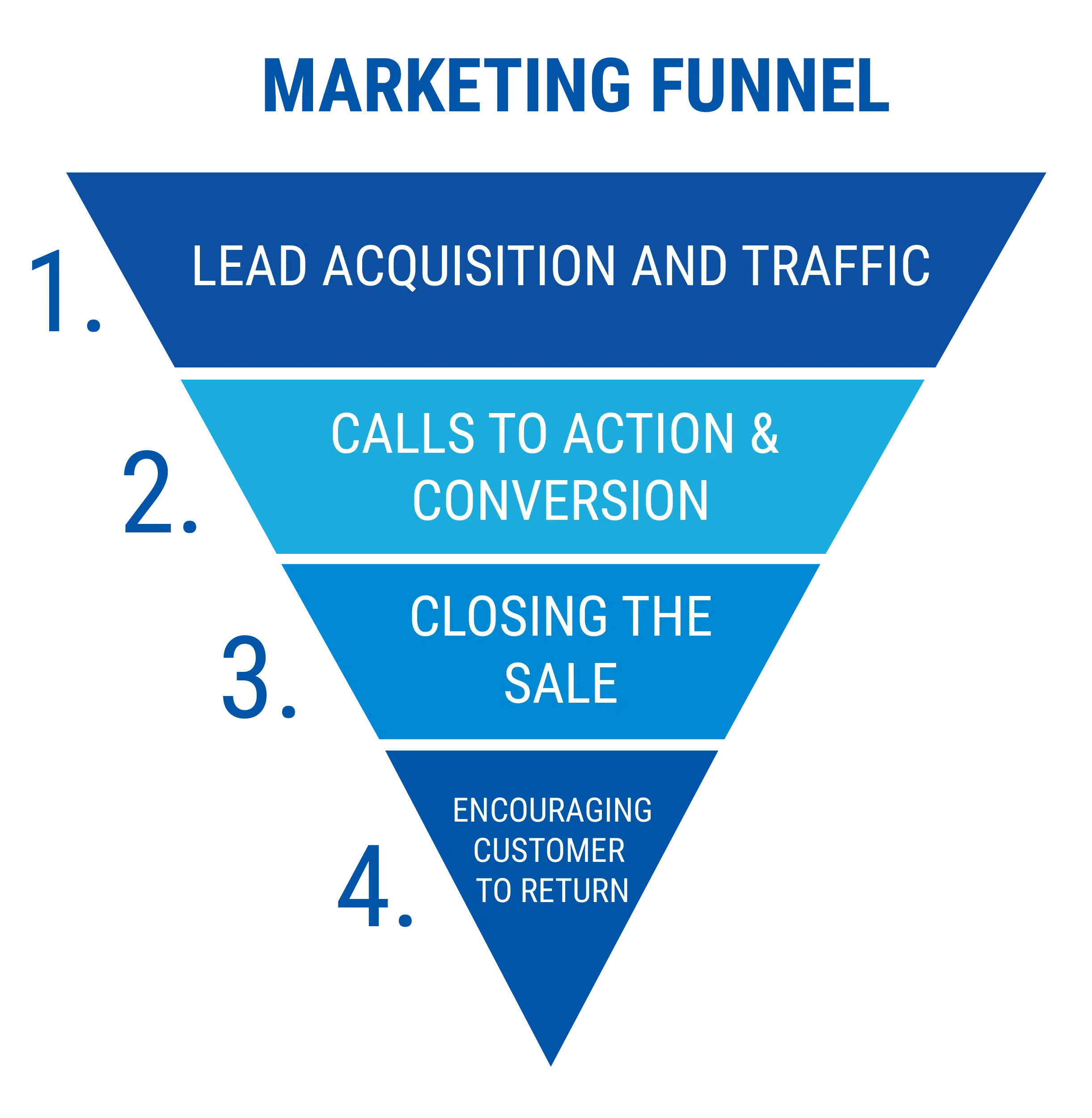
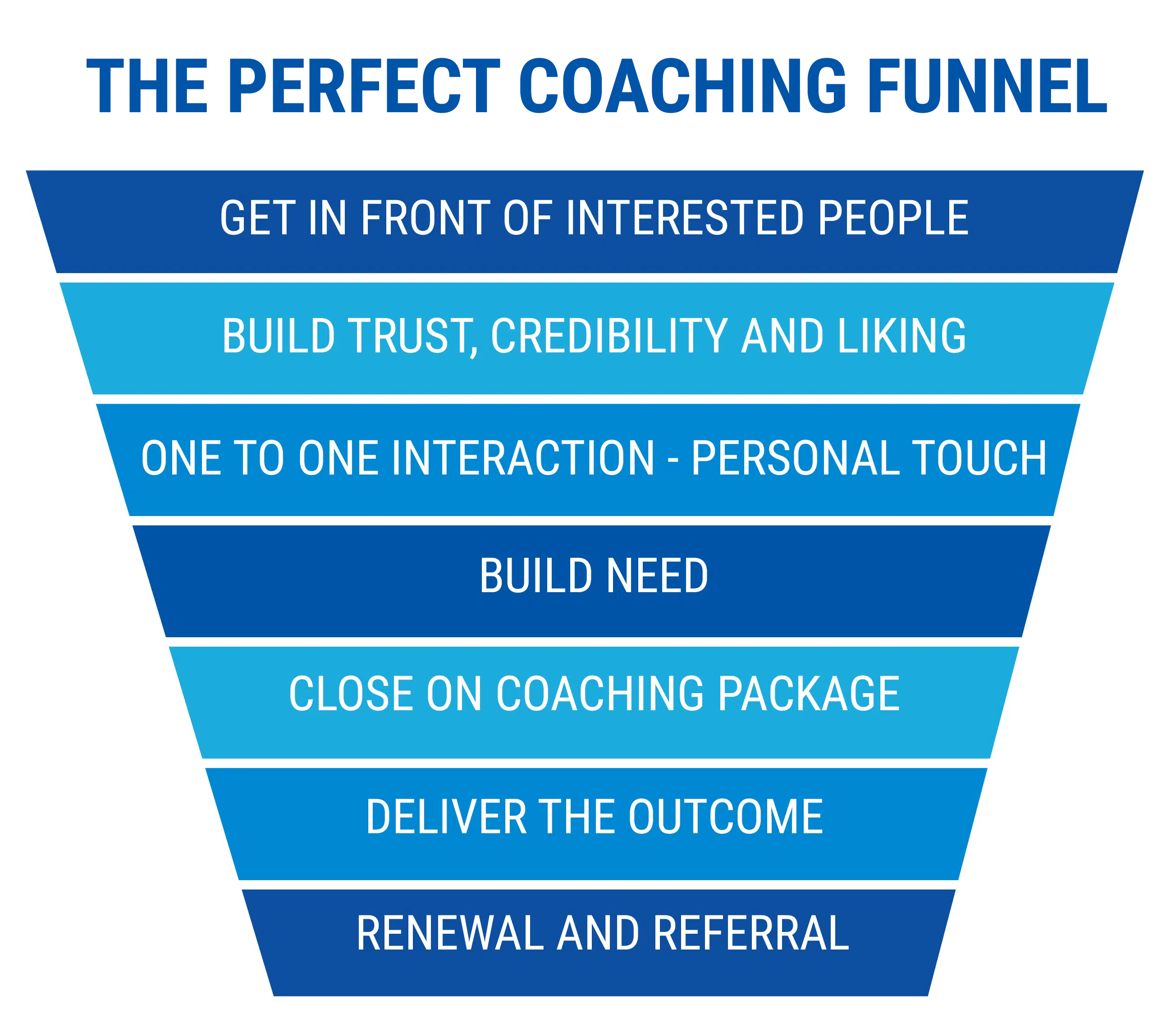

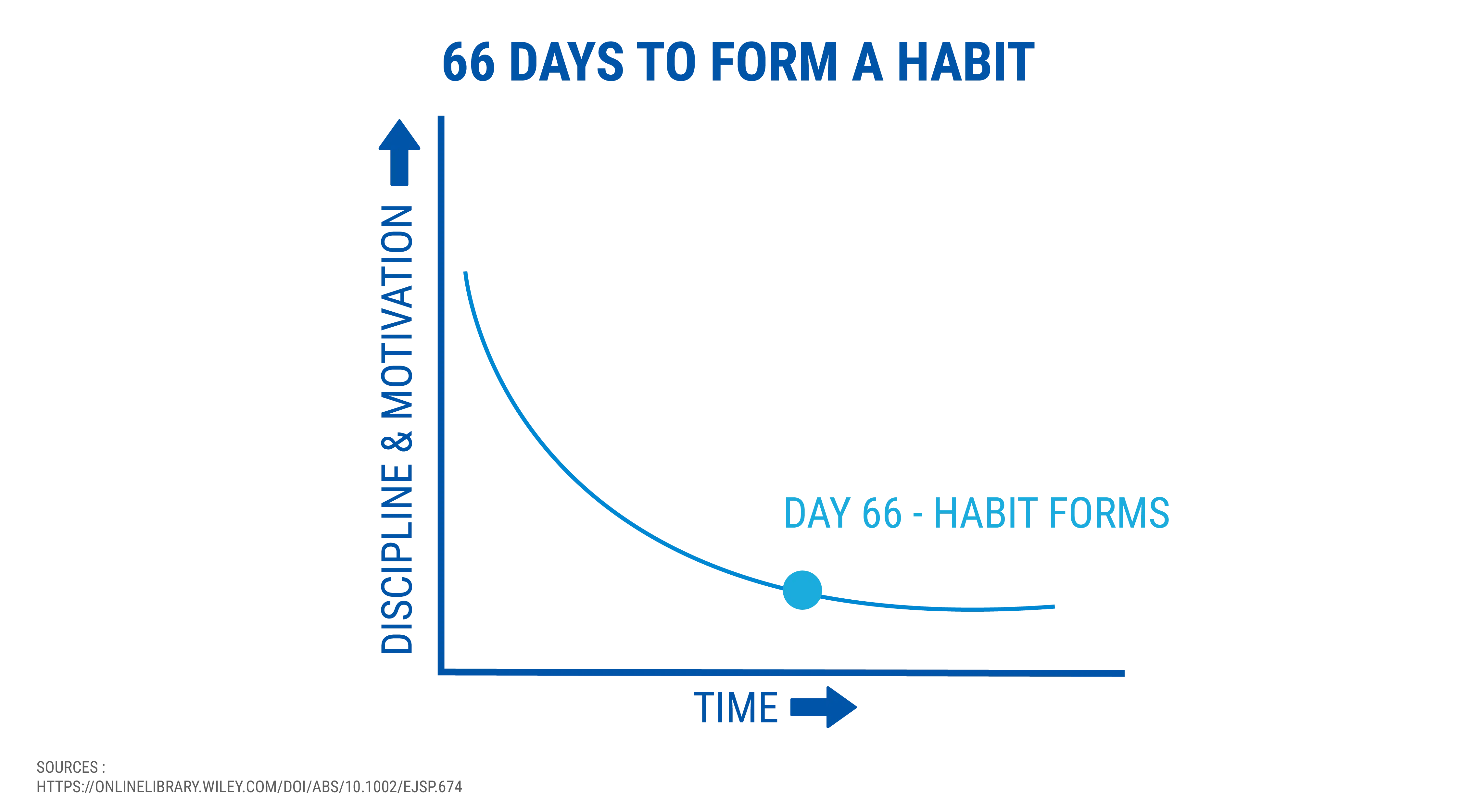
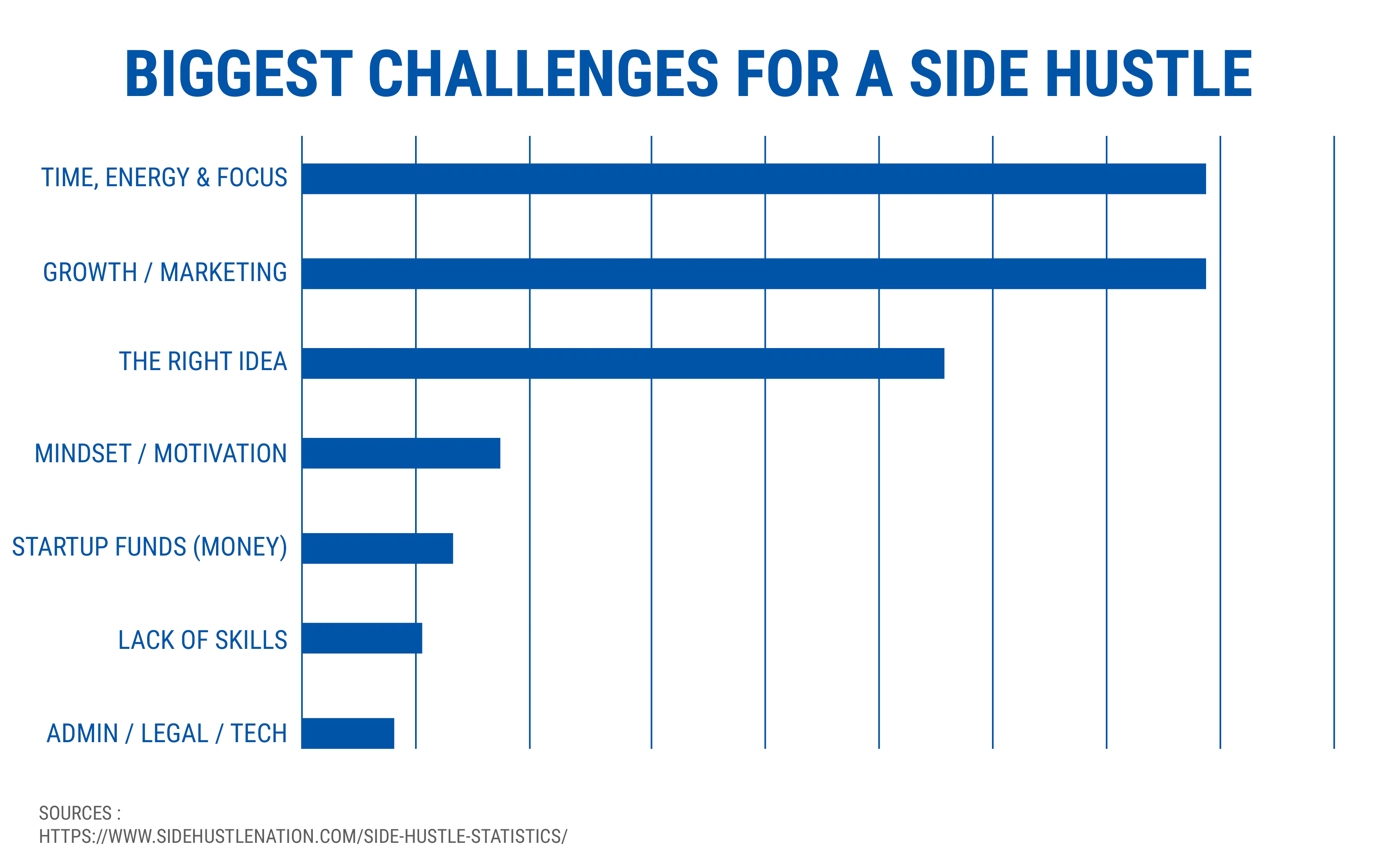
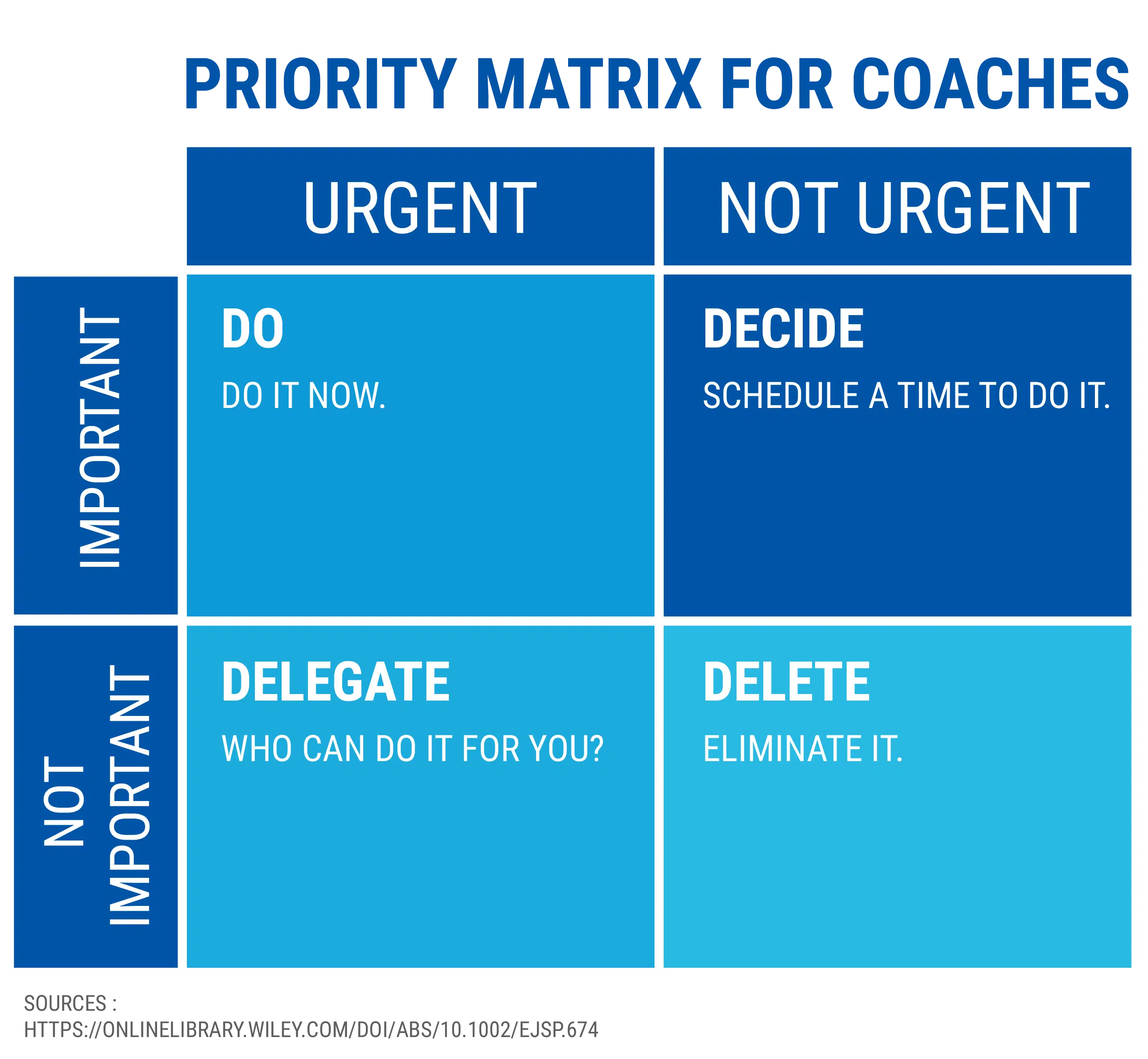
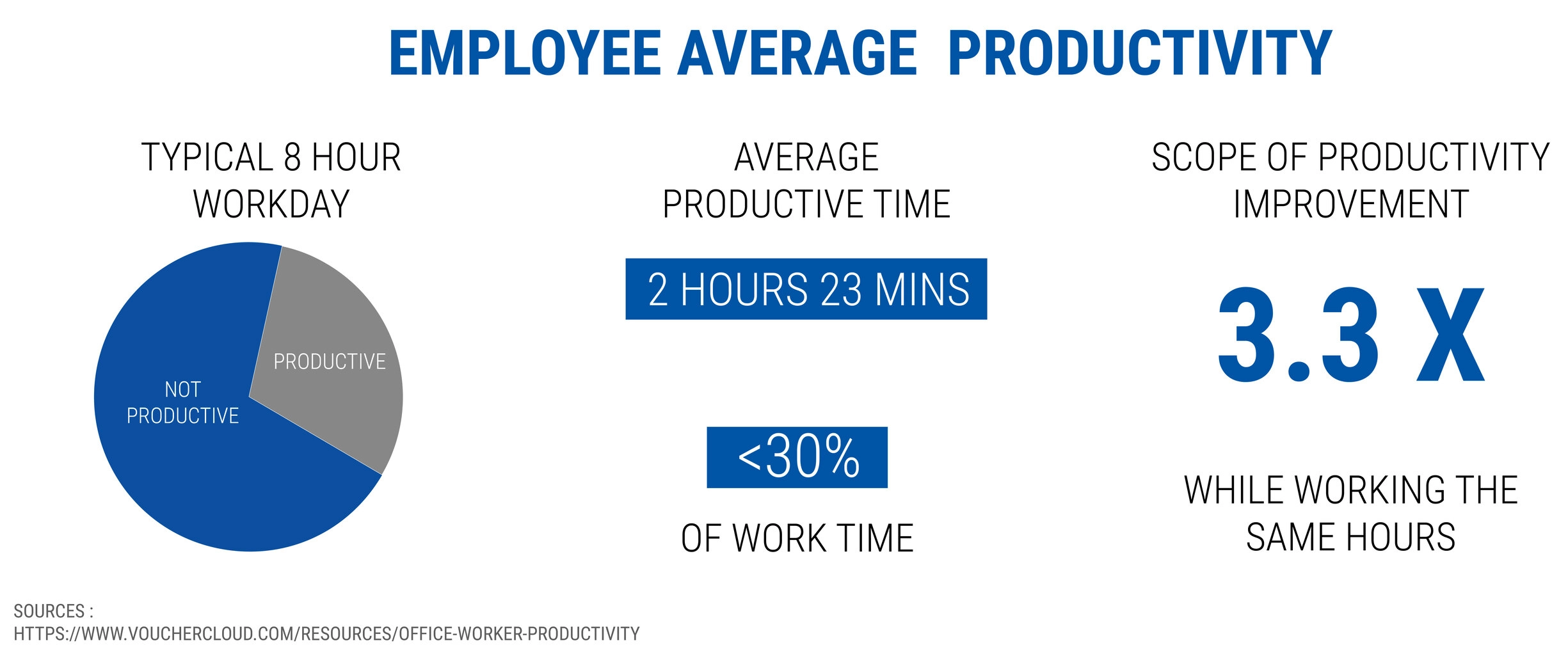
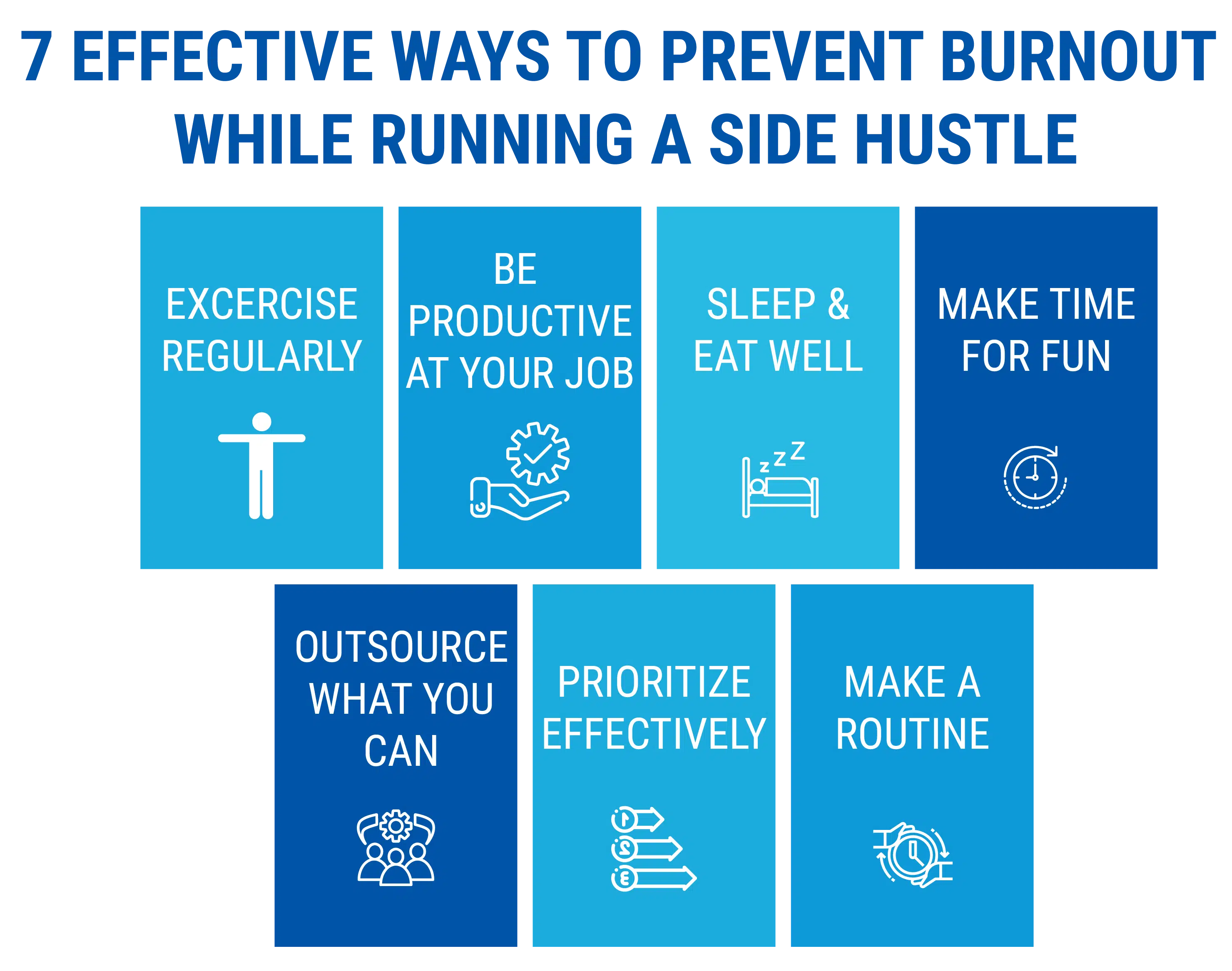
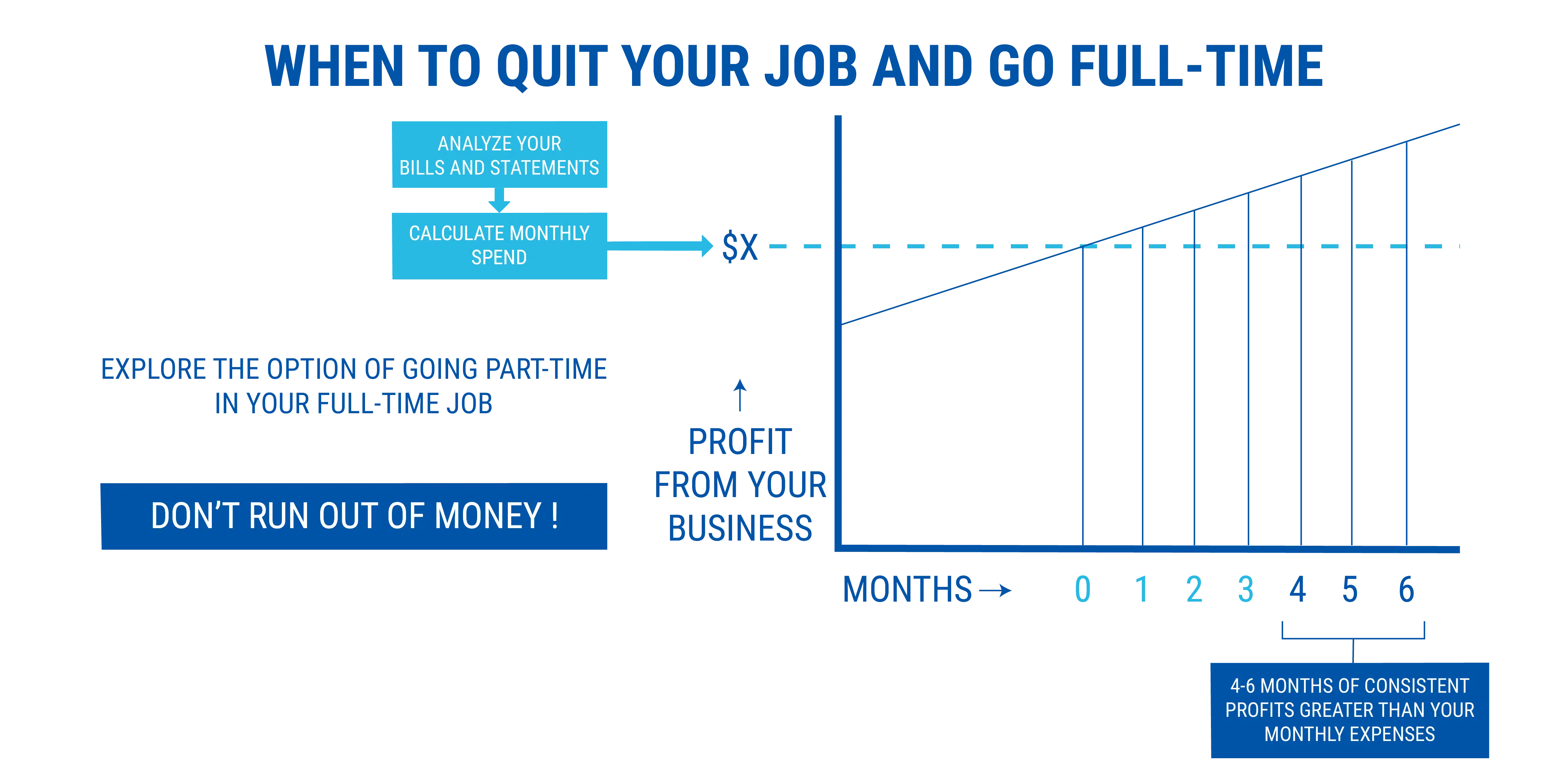

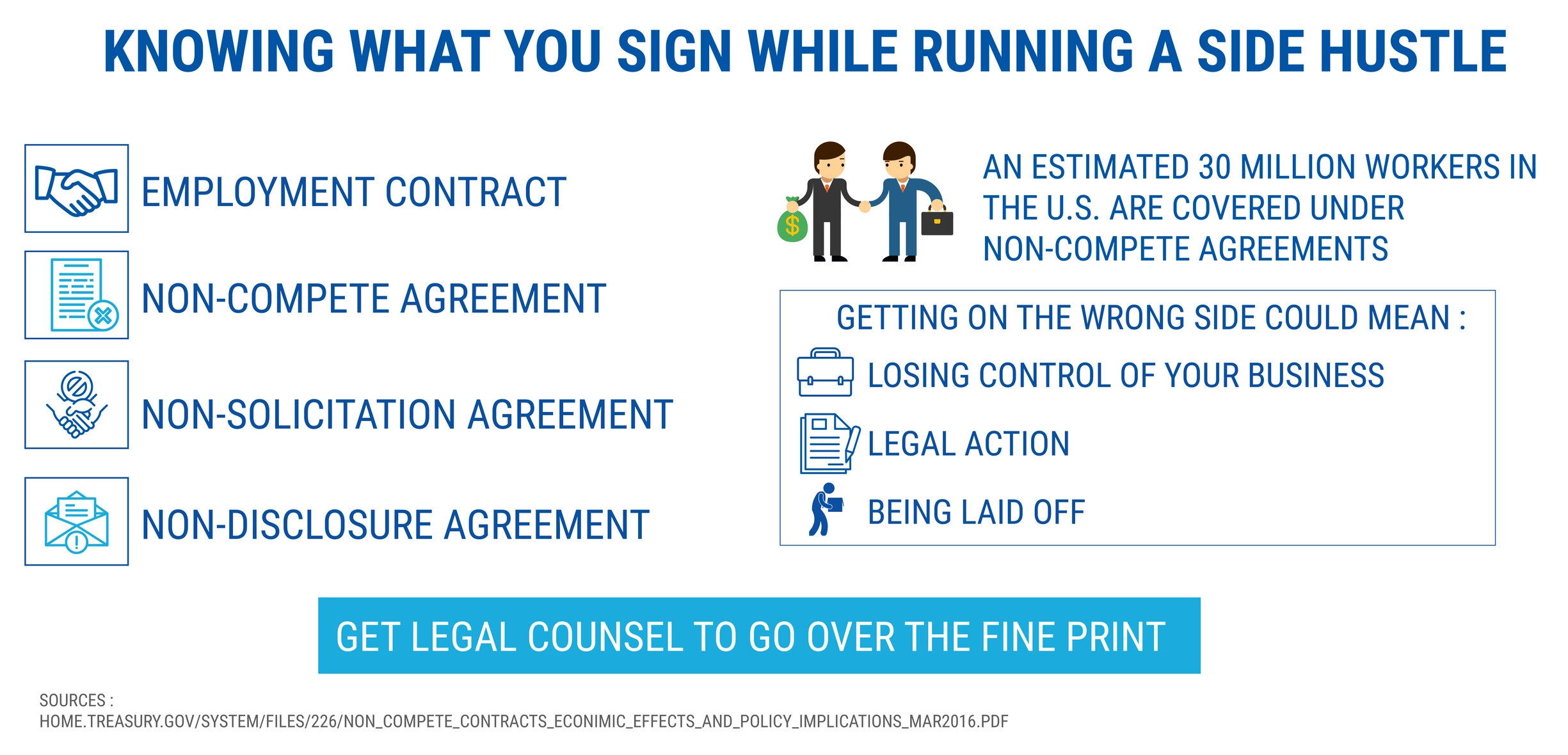
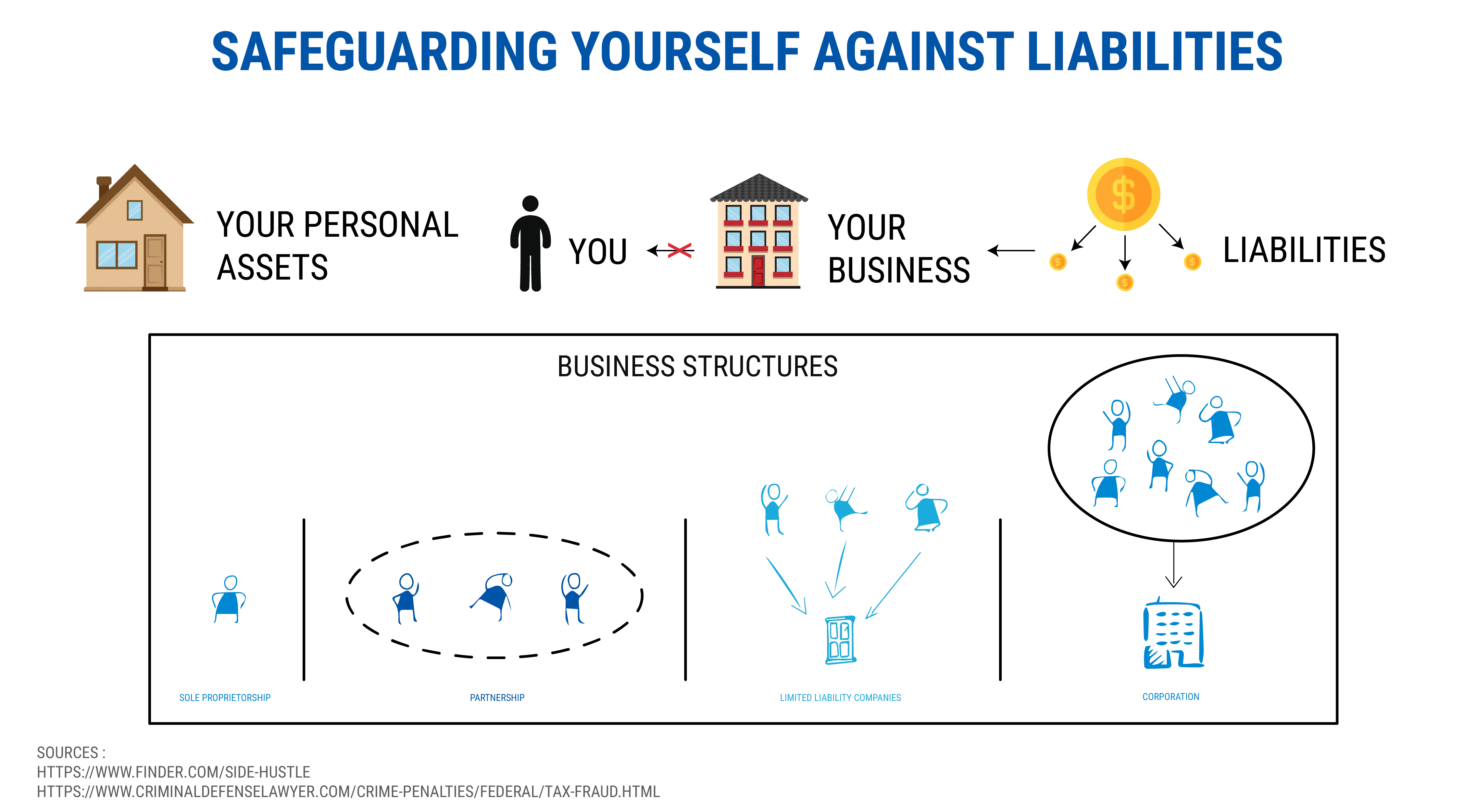
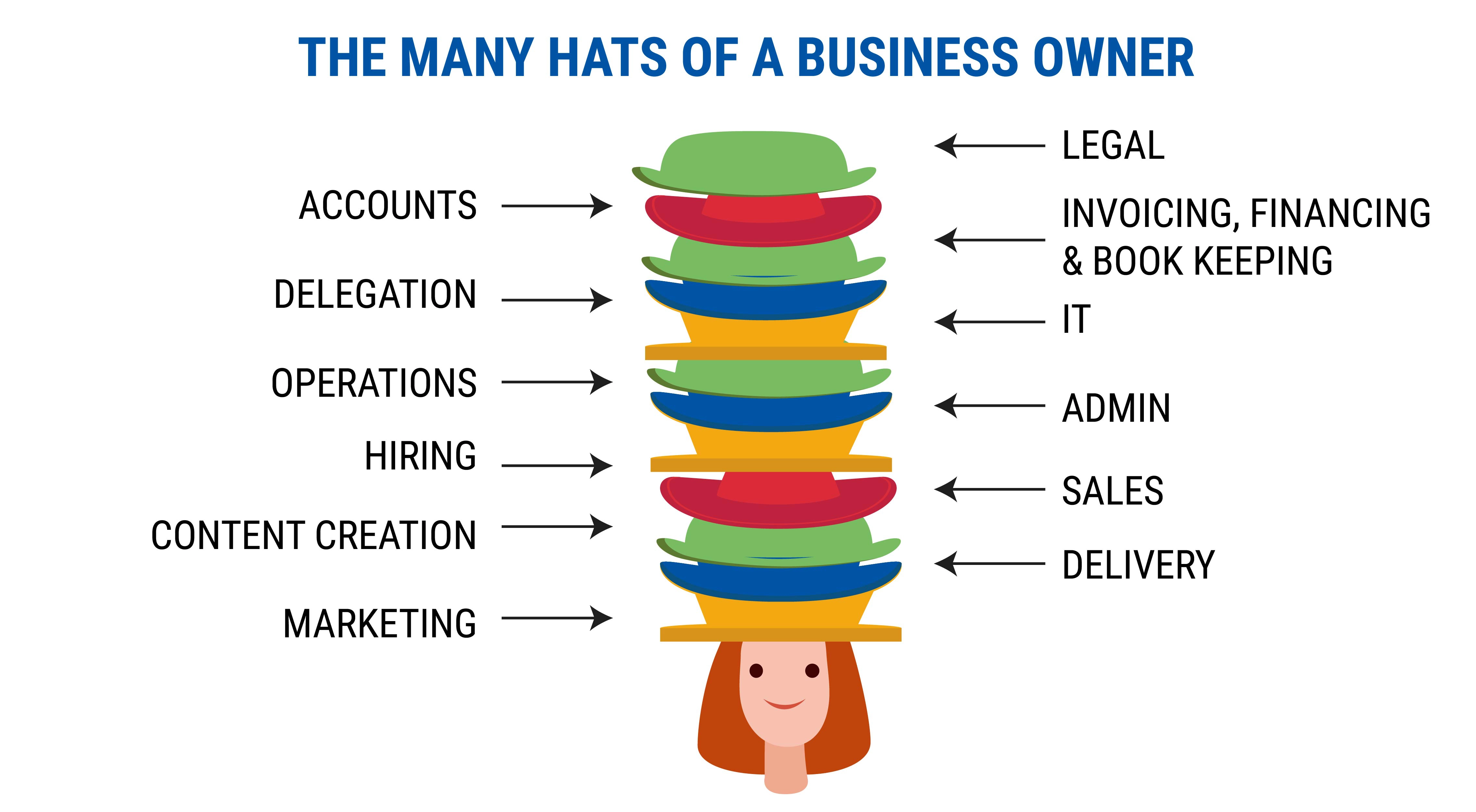

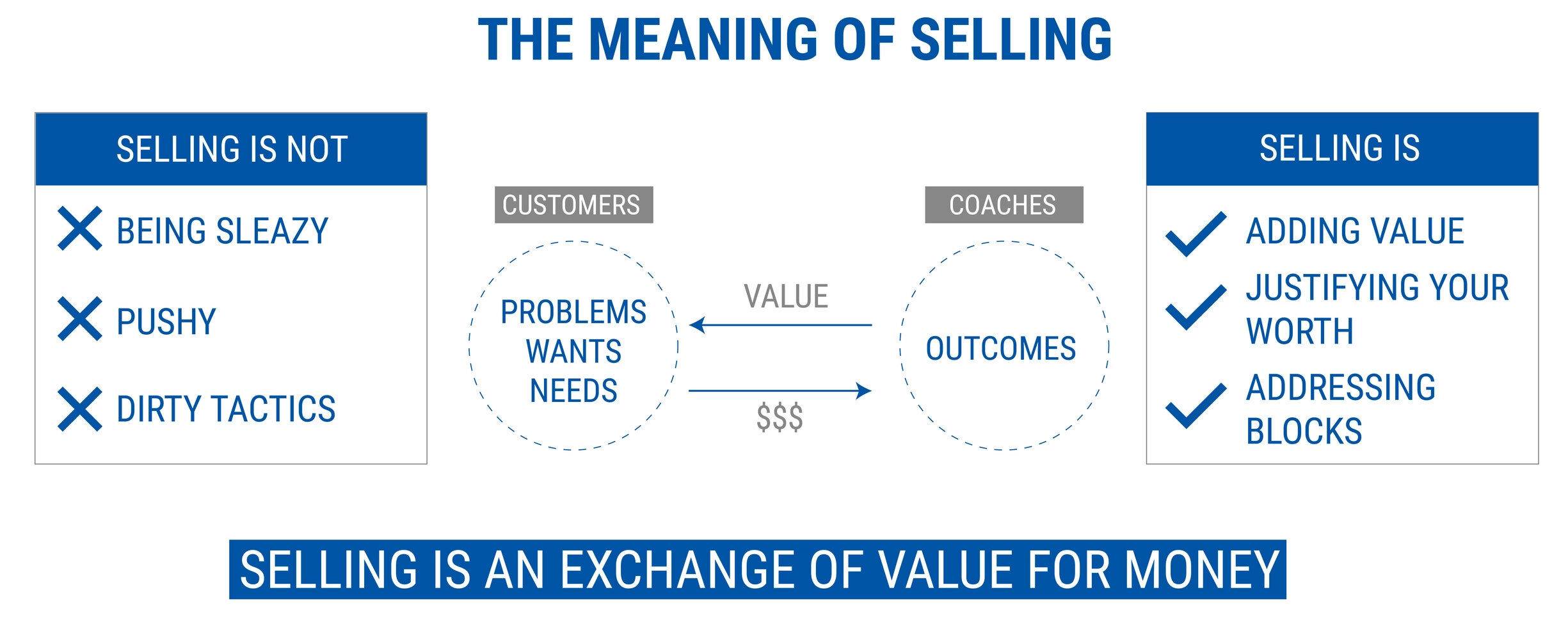

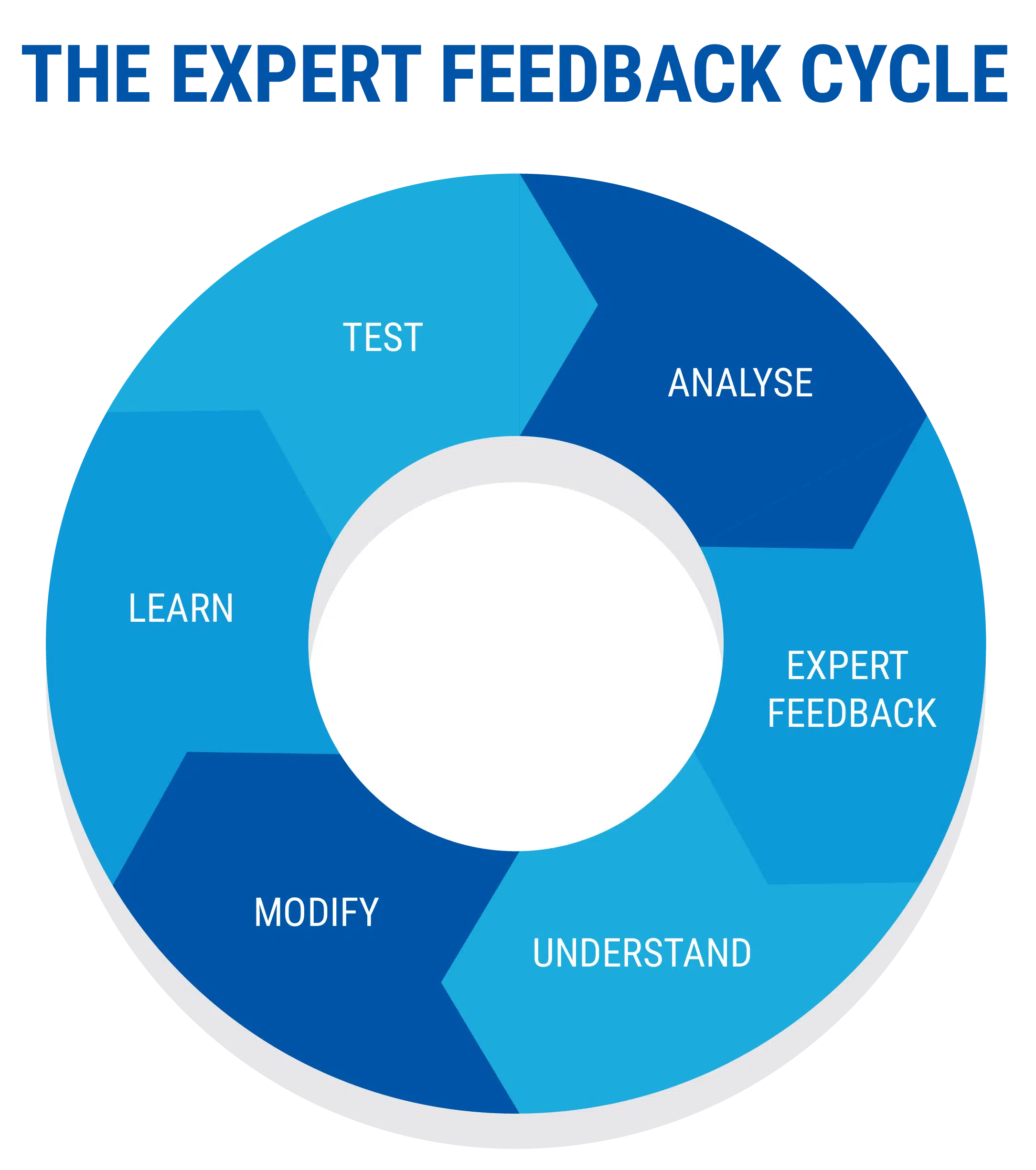
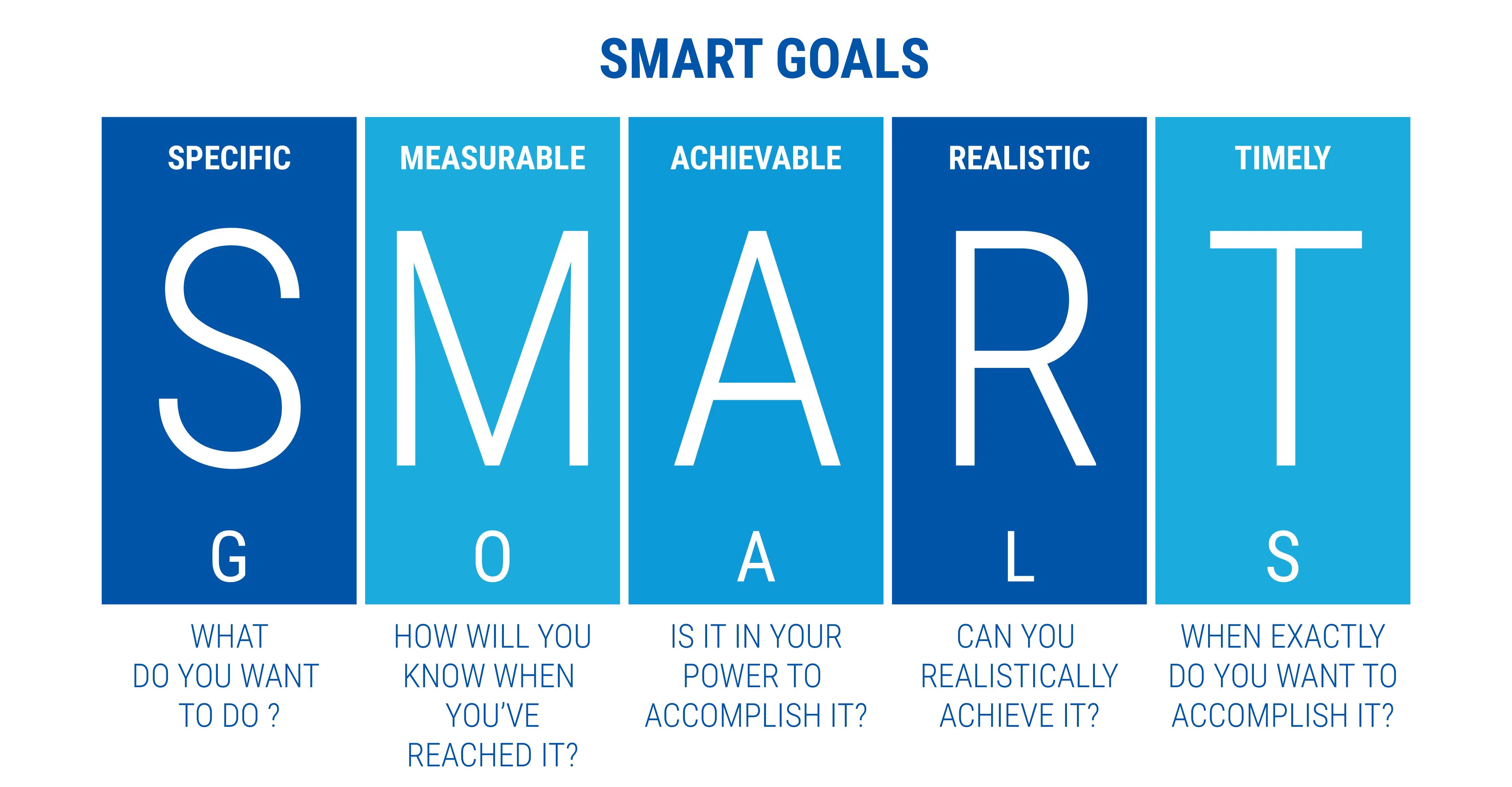
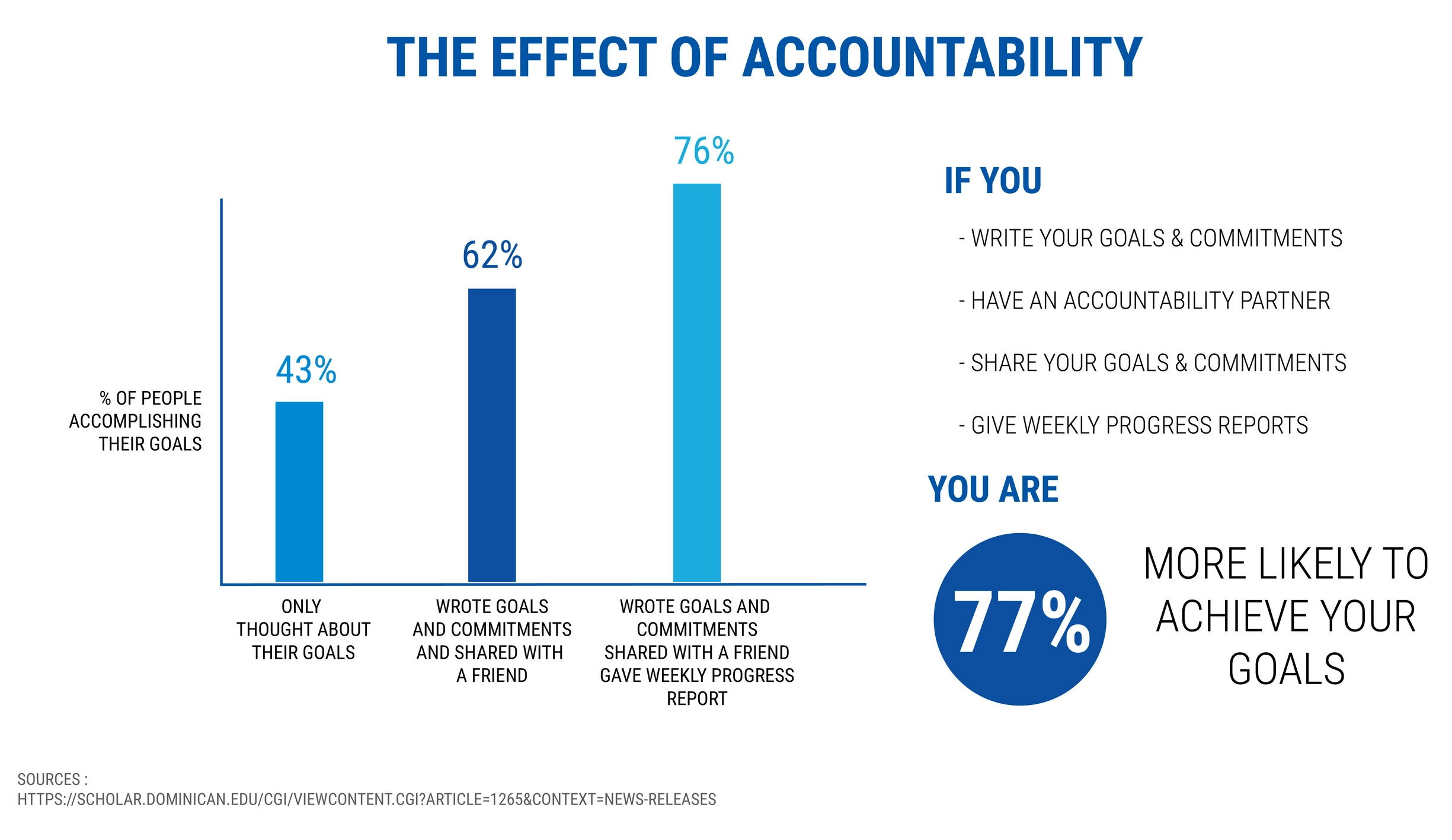
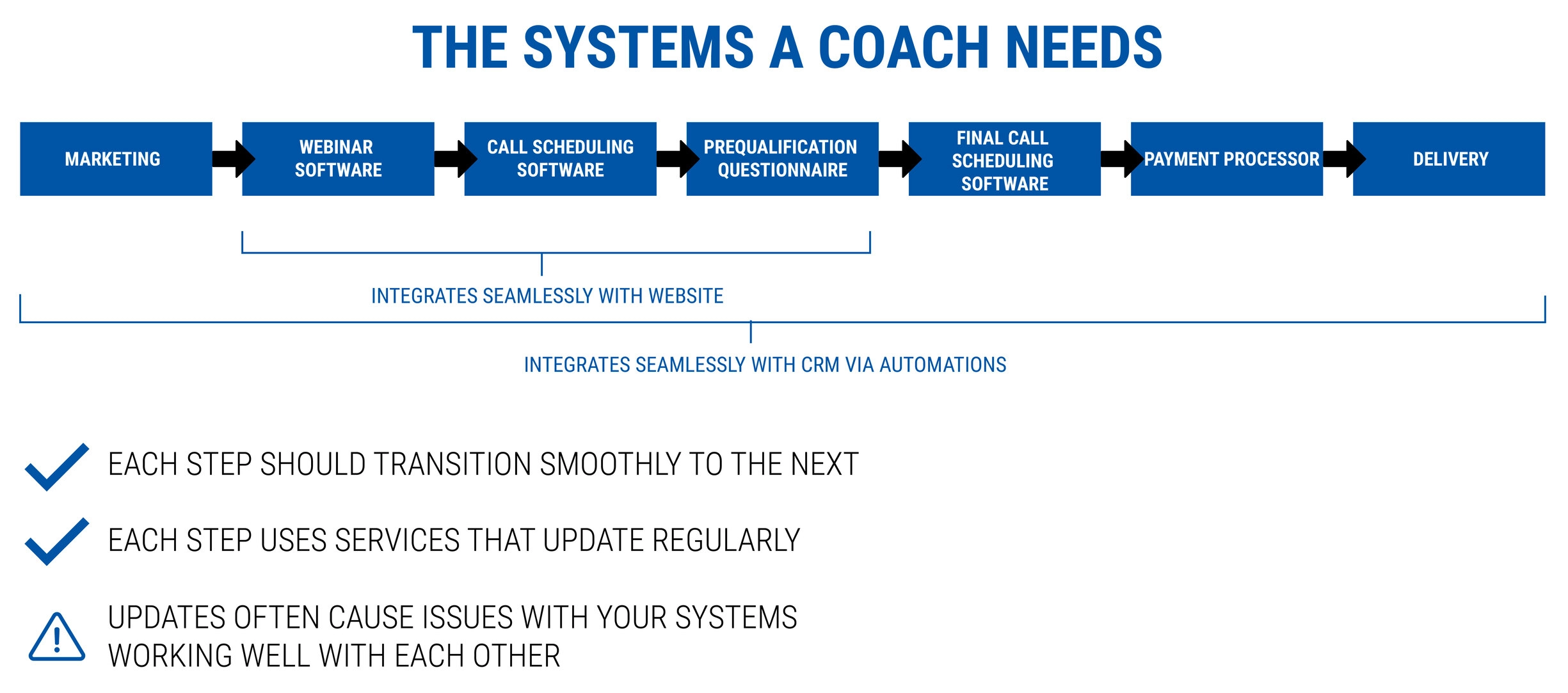
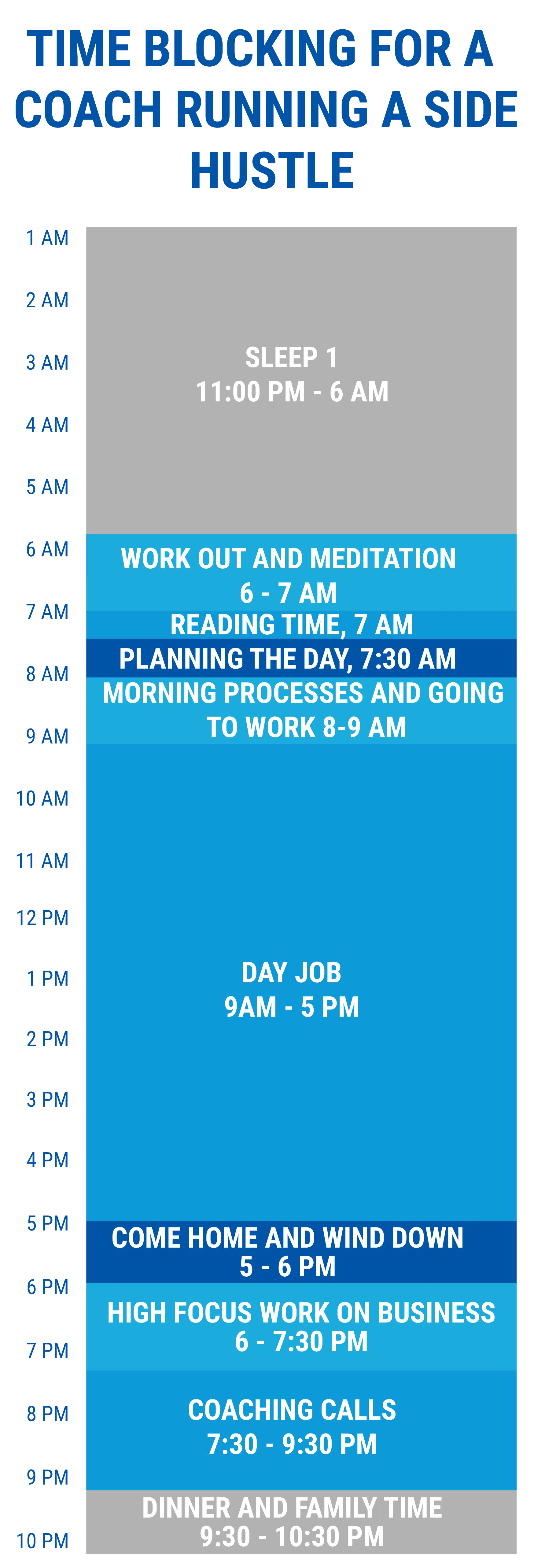
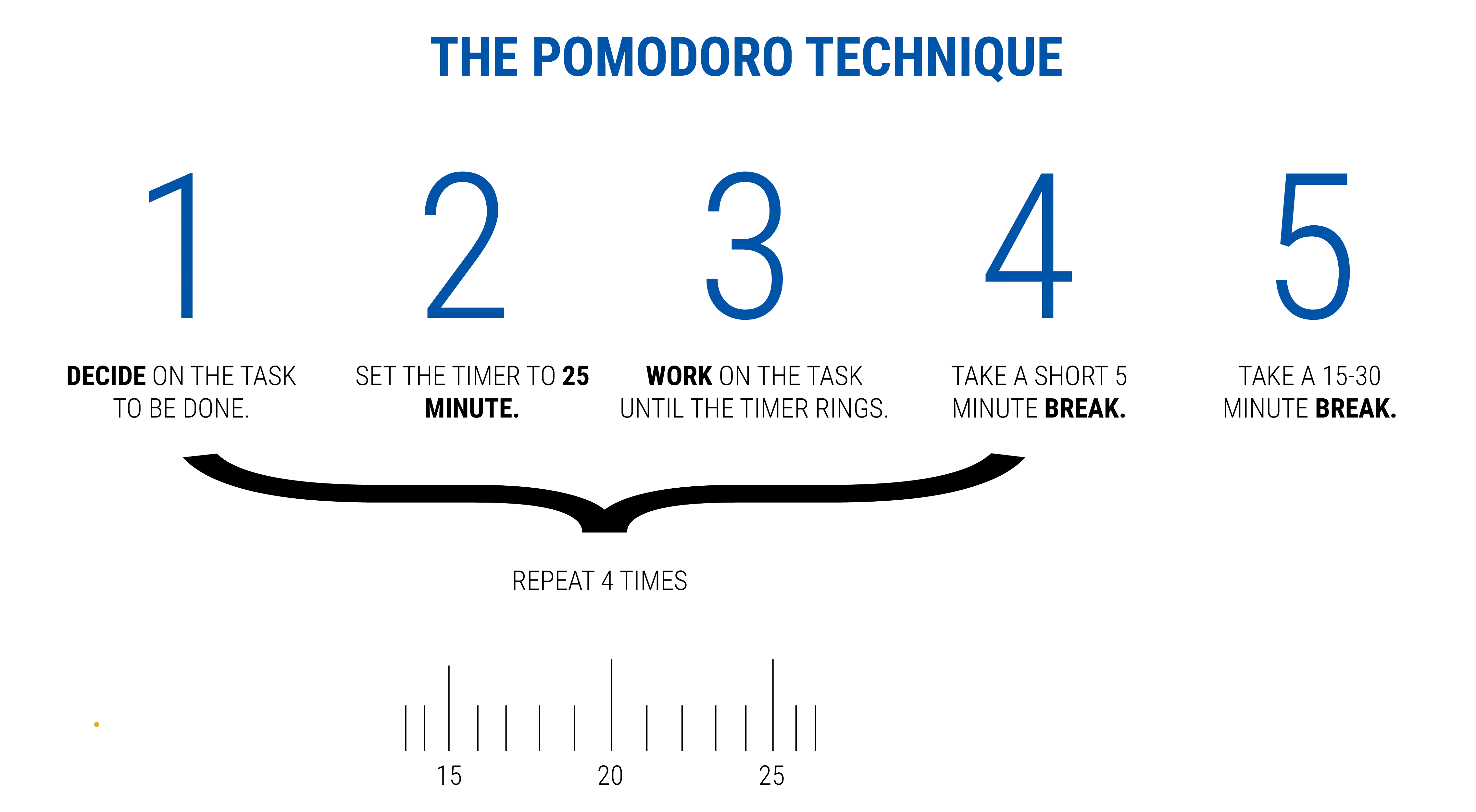
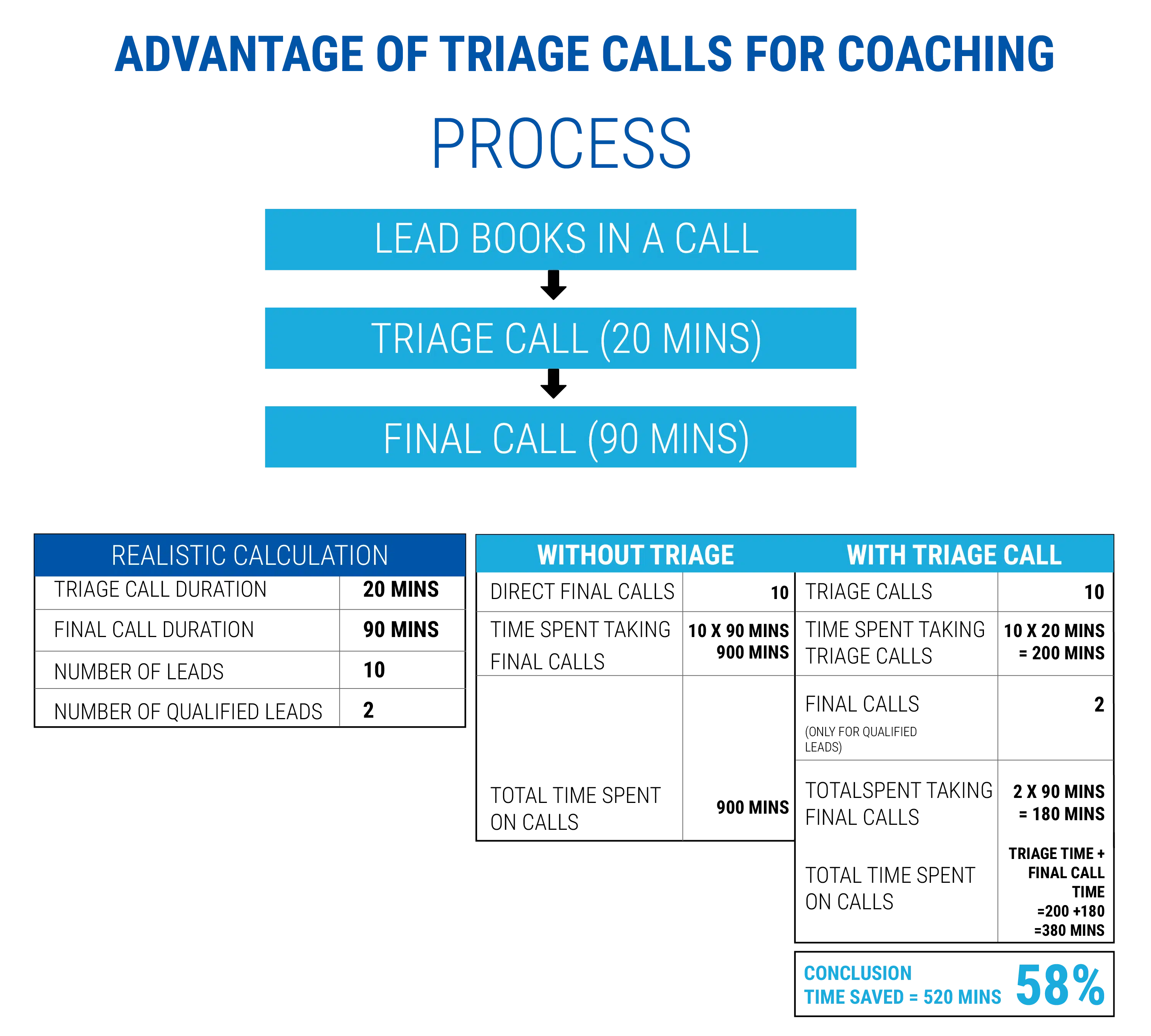
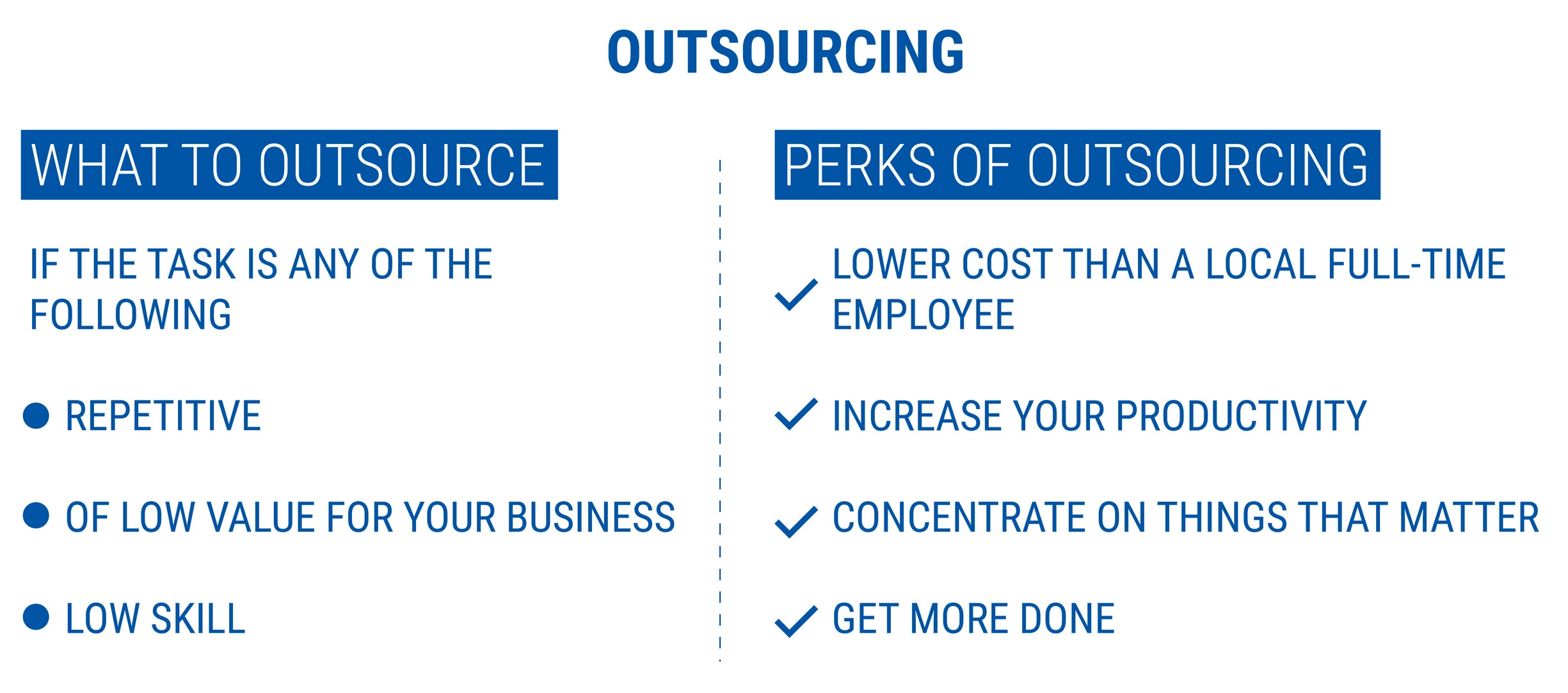





I’m amazed at how in-depth this post is. By far the best guide out there. Thank you Sai!
Agreed. Excellent.
This was a great guide with lots of content to take in and to implement. Thank you so much
This is the most complete guide I’ve ever read about starting a coaching business side hustle. Super helpful! So many things mentioned here that I was planning to do without much careful thought which could have been disastrous for me. Thank you so much
Awesome stuff Sai. It is like a one-stop solution for coaches.
This is indeed very informative and has given me a whole new different perspective, a much better one. Kudos to coachfoundation.com! Thanks for this.
What a fantastic post! This is the best guide I’ve ever seen. Thanks for sharing Sai 🙂
Wonderful article covers so many points that are being faced by coaches today. This becomes like a reference/ cheat guide to successfully managing your full-time work and your passion for being a coach.
I am amazed to see how well you have explained the concept Sai. This is definitely one of the best article for an aspiring coach to get started. Could not thank you enough for putting in your efforts in producing this masterpiece. Thank you so much and wish you much success
What a fantastic in-depth guide! Loved how elaborate and detailed it is covering literally everything that a coach needs to know. Thanks for sharing this so openly Sai… this is going to save a lot of time for so many! <3
Very informative post. Thank you!!!
A truly comprehensive guide. Wonderfully written and easy to understand. Thank you so much, Sai!
Wow, an amazing guide for starting a coaching business. There are lots of strategies which will help people to grow their startup coaching business. Thank you so much sai.
Thanks so much, Sai. I am really grateful to you for sharing this awesome super helpful guide.
Clearly the most comprehensive guide that any aspiring or even a successful coach will benefit from. This article touches on every possible aspect of coaching that makes it hard for others to start their business. This is an absolute gem and am glad you also have a PDF version. Very well-thought of. Thanks!
Loved how detailed & informative this guide is! The content will surely help people succeed in creating a successful coaching side hustle. Thanks, Sai!
After going through this it changed my whole perspective, I was unaware of so many things and the answers to those questions were so easy to comprehend . Started reading the article as a highly confused soul to ending the article by feeling enlightened. Thanks a lot for giving me a whole new perspective about this.
Very very well written. Great insights
Very Interesting and informative blog, I can easily see how this could help a coach succeed. I’m clapping my hands even if you can’t hear me. Thanks !
Thank you Sai, Its an amazing guide for starting a coaching business.